April #11: Banana Republic
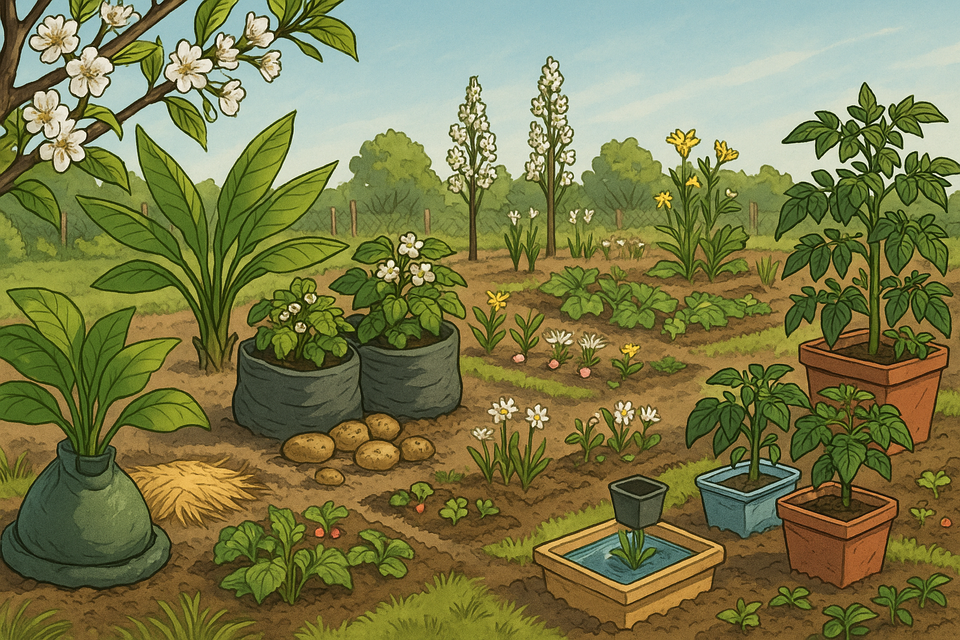
It’s April. Well, technically, it was April. Now it’s May, and I am happy to report that my fruit trees have survived! We had one day when the forecast scared the hell out of me. However, it turned out JUST fine, at least so far! I don’t want to jinx it yet.

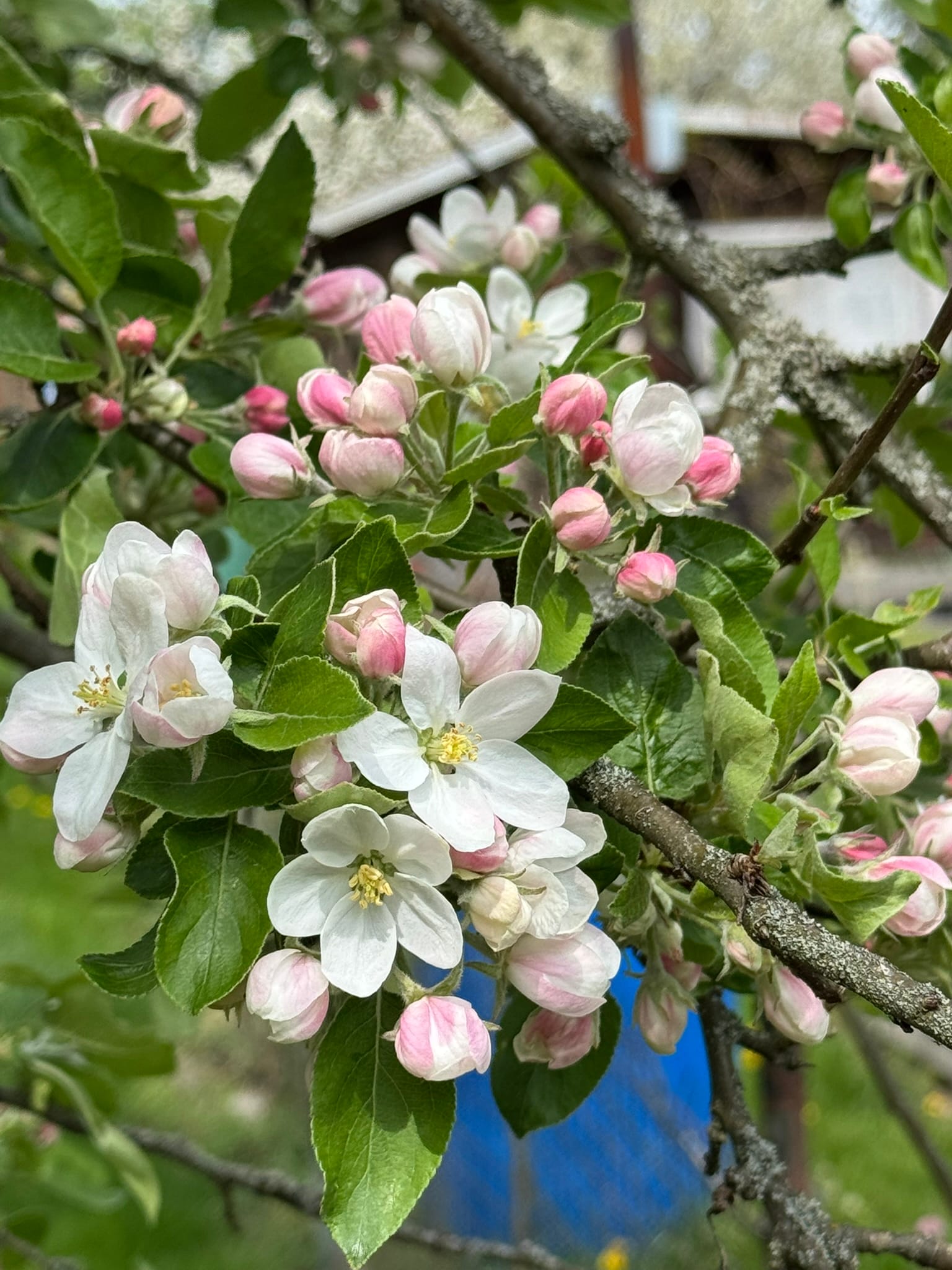
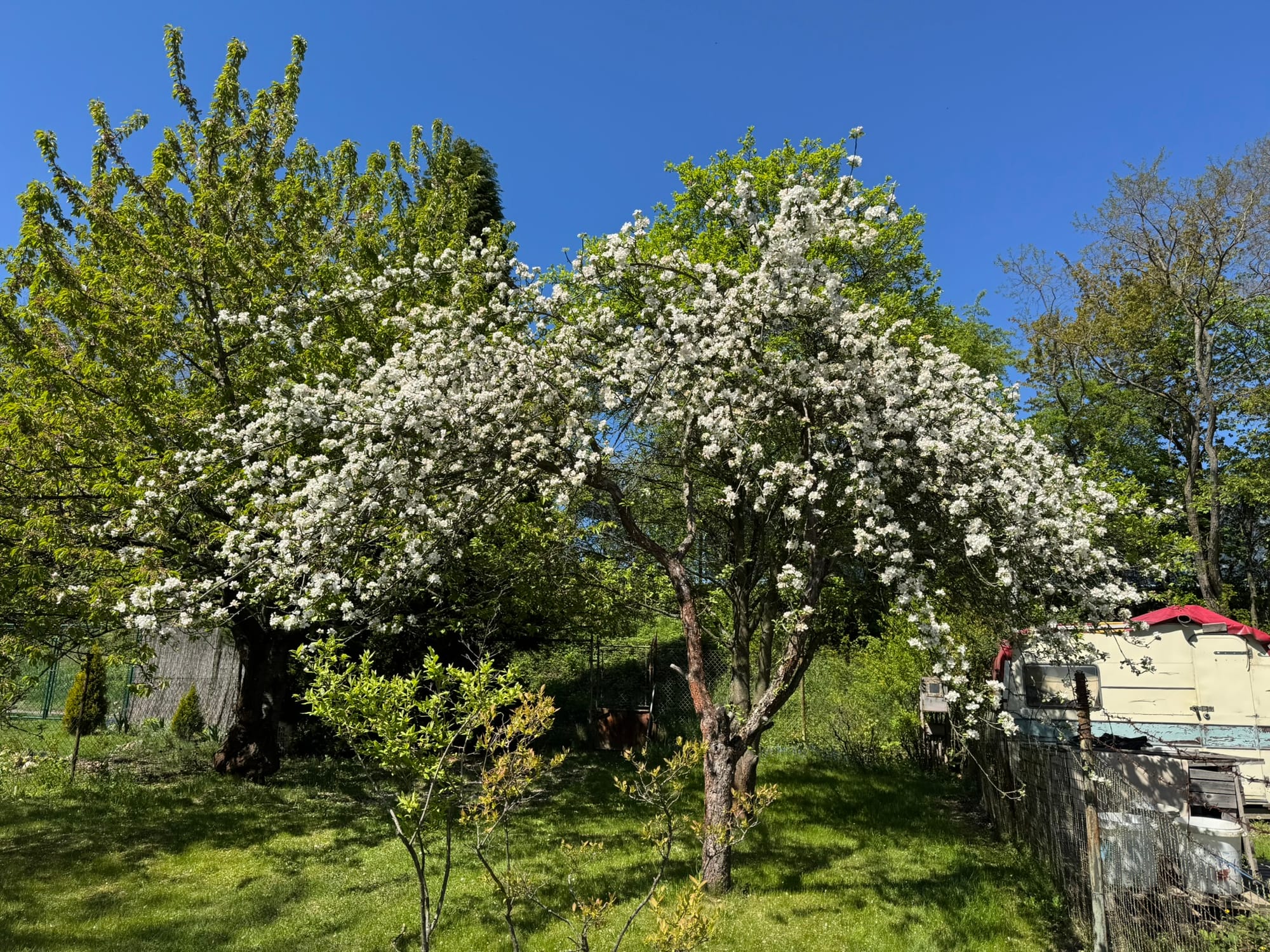
The main show was, of course, stolen by my cherry tree, the one I wanted to survive the most. I watered it heavily the day before the frost to provide as much heat mass and humidity as possible. It’s not the most effective way for heavier frosts, but it can push the temperature up a little bit. And “little bit up” is sometimes just enough.
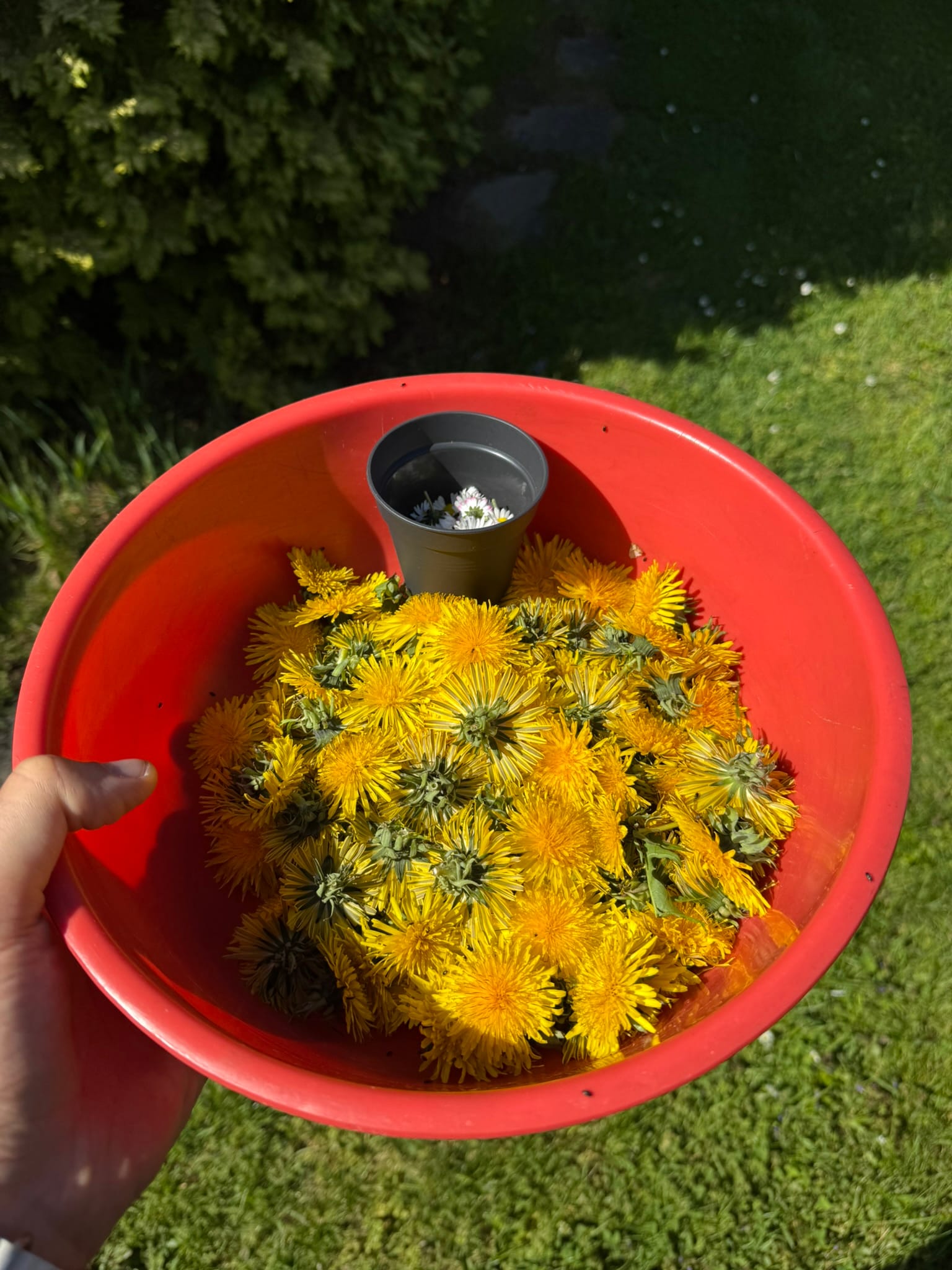

Dandelion syrup.
the exotic greenery
I HAVE BANANAS! YES! Finally! I have my first-ever banana plants! I’ve ordered several cold-hardy plants of the Musa family. And they are beautiful. I never thought I would be this excited for a decorative plant. But I grew pretty fond of these plants through my visits to Tenerife.
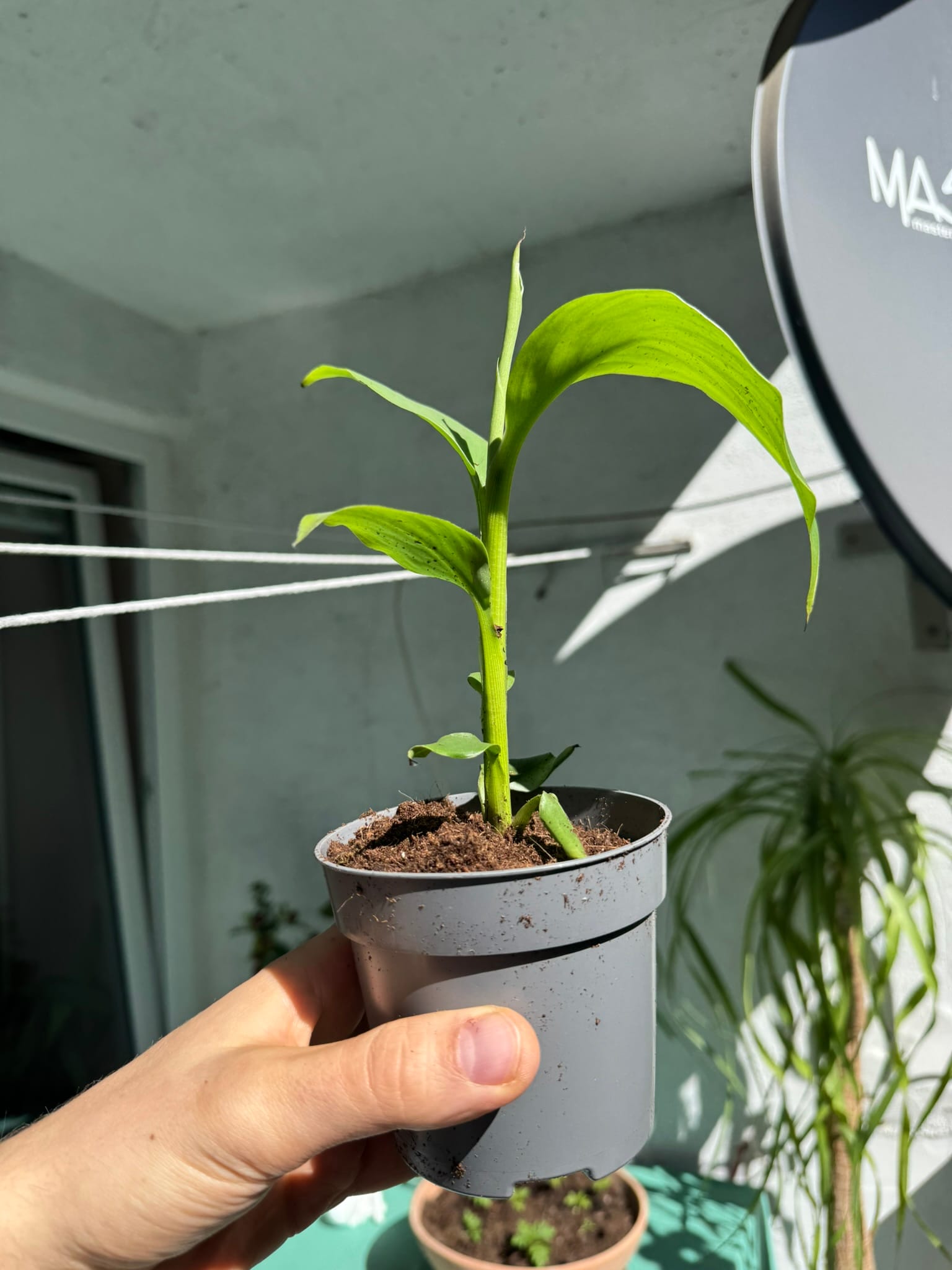
I want to plant them in full sun in a pack of 3 to 4 plants. Hopefully, at least one or two of them will survive. The banana plant is a heavy feeder that loves moisture. For this reason, I’ve ordered large donut-shaped watering bags. These bags will slowly release water into the soil and also serve as a protective mulch to prevent evaporation. The only evaporation I want to see is through transpiration.
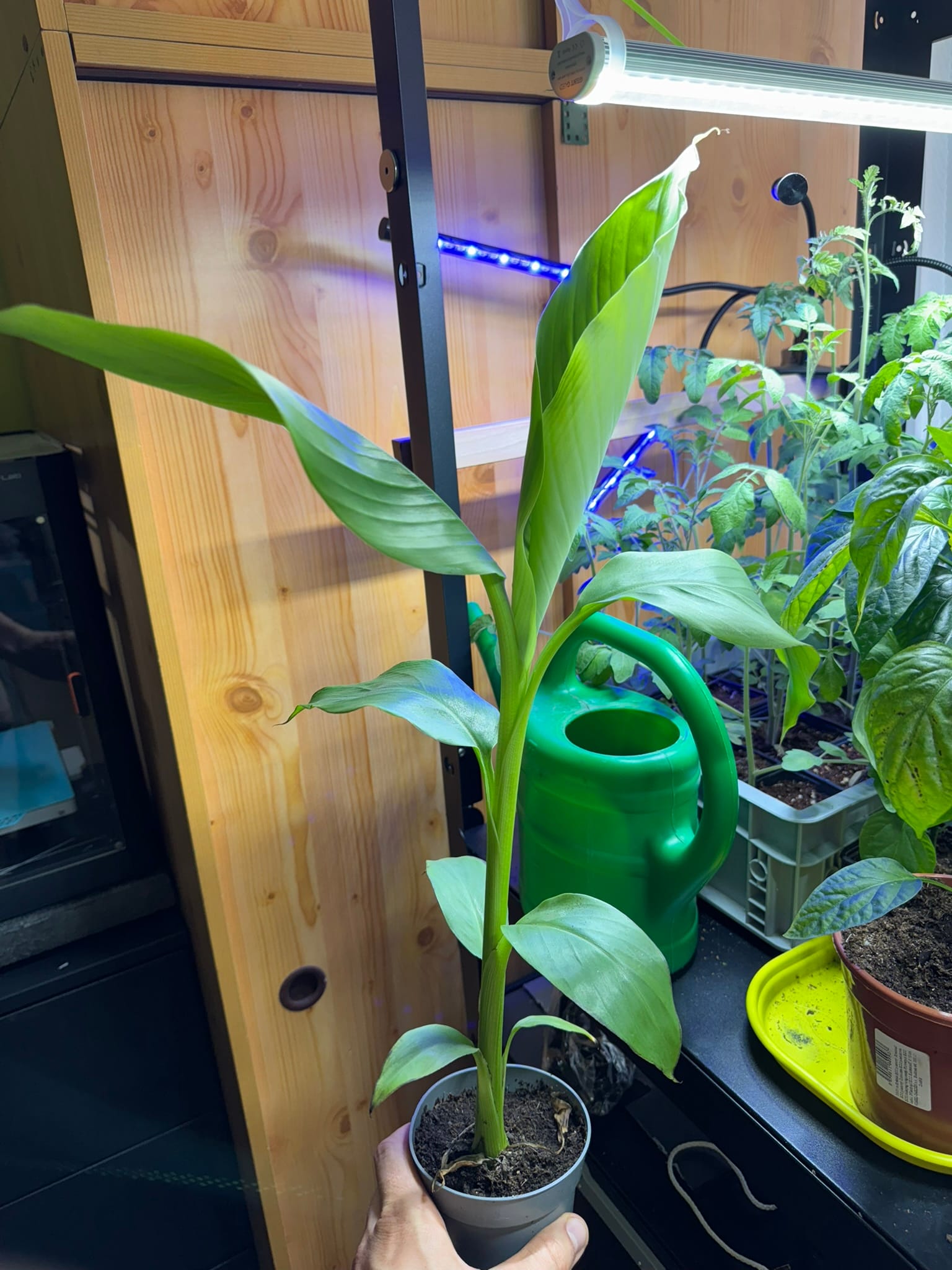
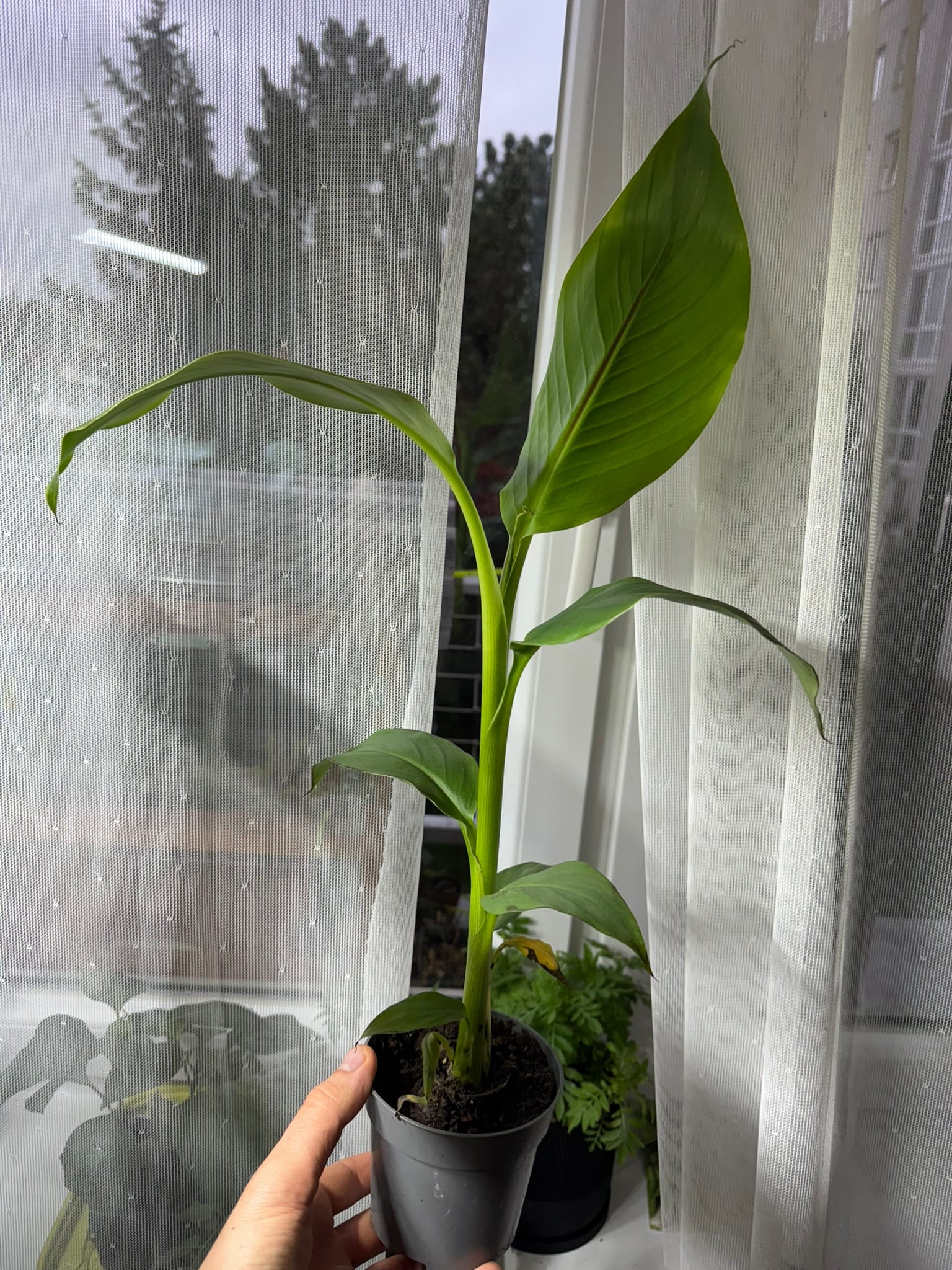
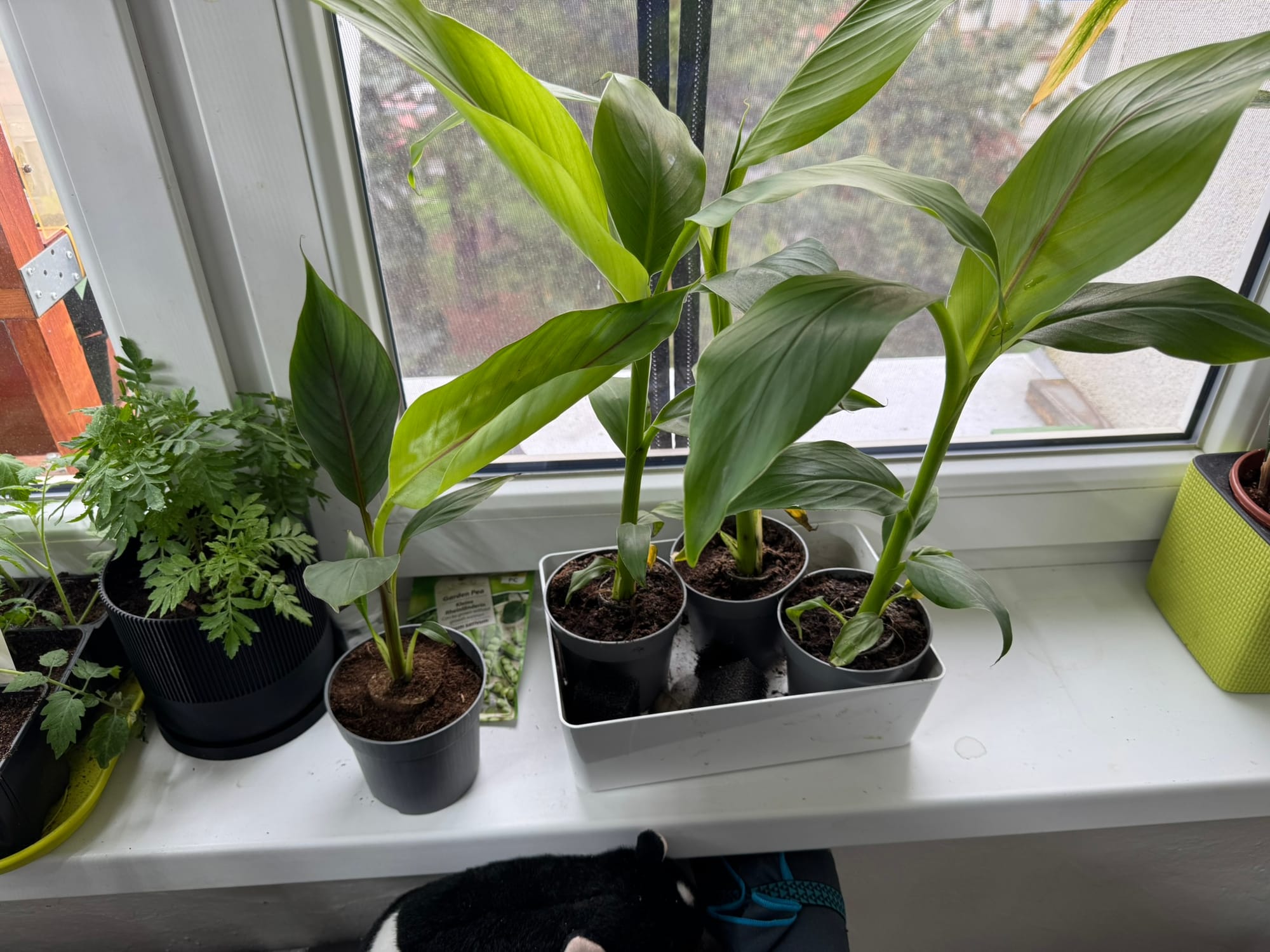
They grow like crazy.
I don’t expect them to produce any fruit ever. Heck, this year I’ll be happy just to see them not dying, because I have no idea how to grow them or what the common issues are. As with any other plant, you can read all the literature in the world and call yourself an expert in growing bananas, but then the harsh reality of your local conditions ruins your expectations and drive. This is actually the primary reason why people quit gardening so often these days. Not everything is as easy as the TikTok shorts make it seem.
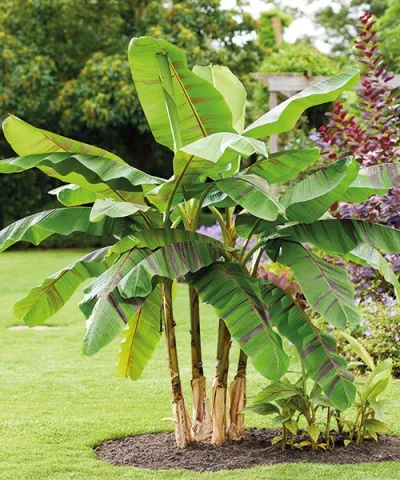
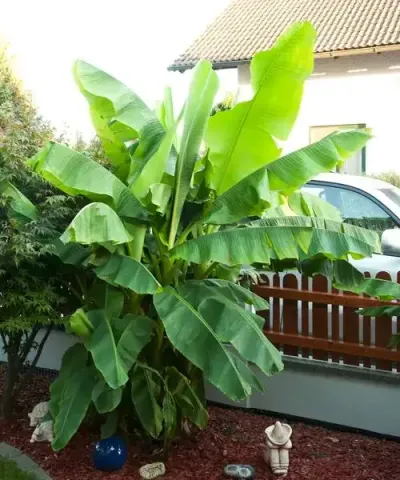
the expansion slot
While shopping for my beautiful bananas, I added some other stuff to the cart. I already have two large red currant bushes, but both of them are quite old, and the future doesn’t look too bright for one of them, as it’s getting more and more shaded by the large walnut tree.
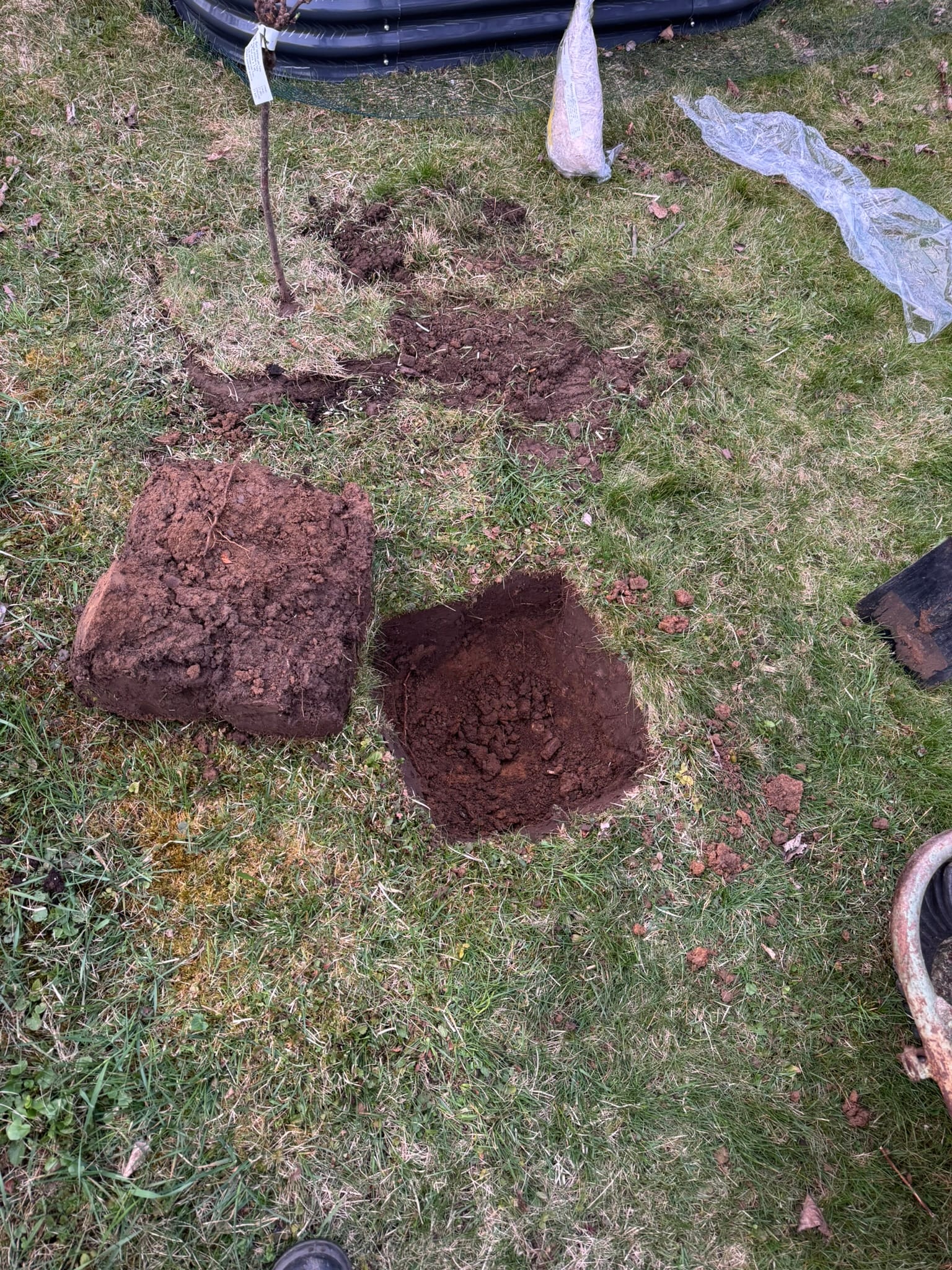
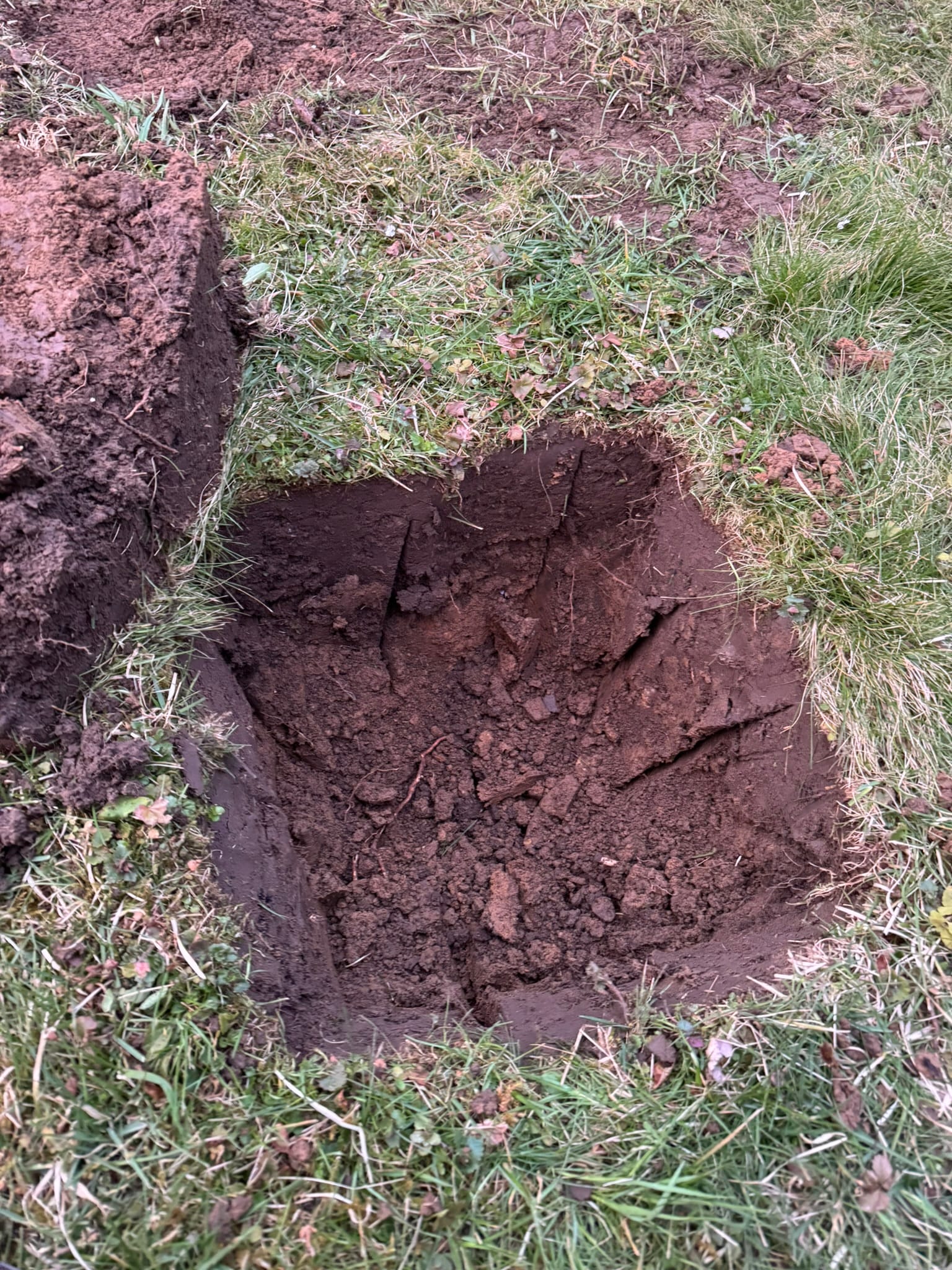
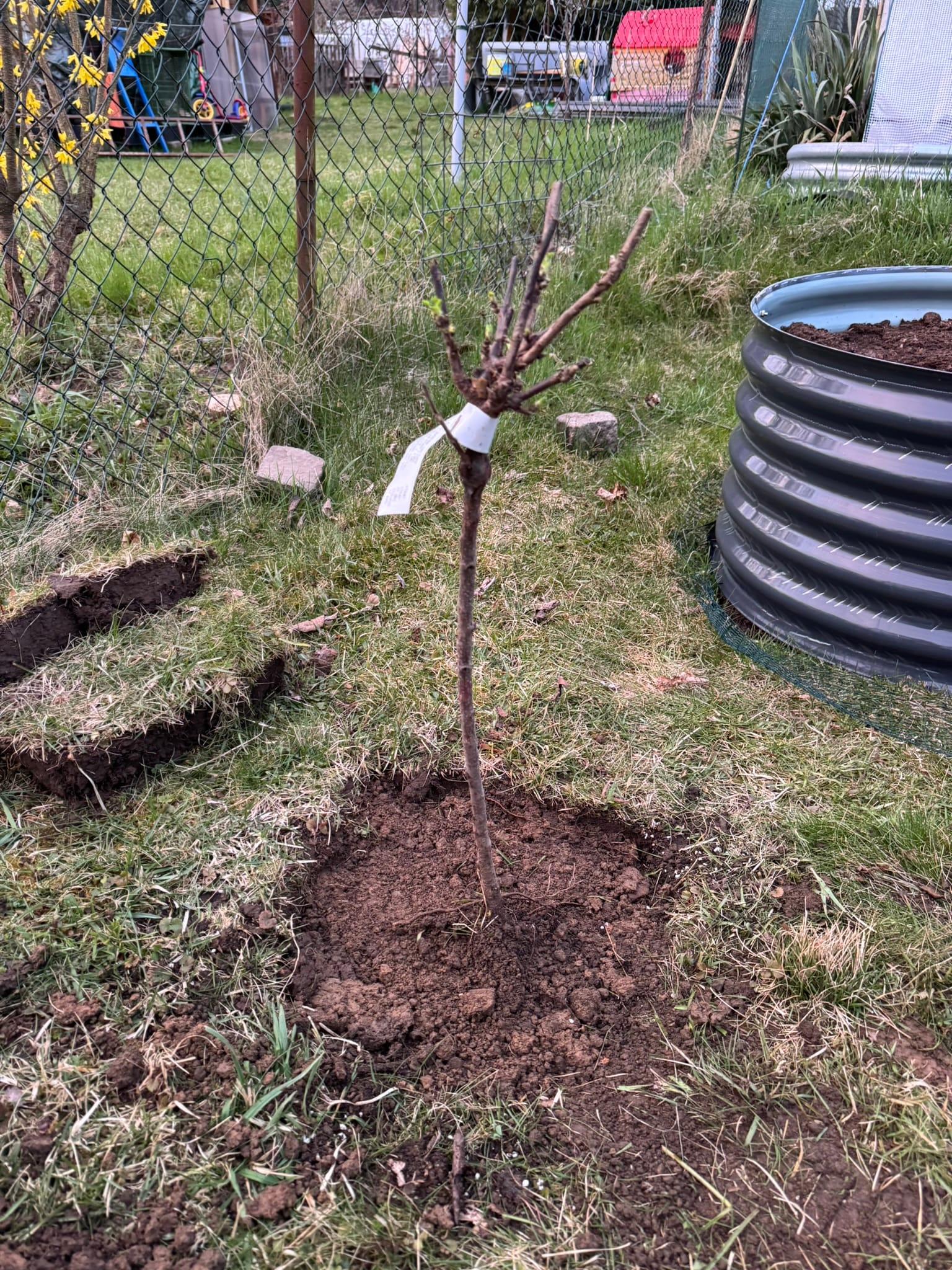
The ridges should prevent waterlogging a little bit.
I planted both of them close to my open field beds, as this place had already hosted gooseberries in the past, and the sun was just right.
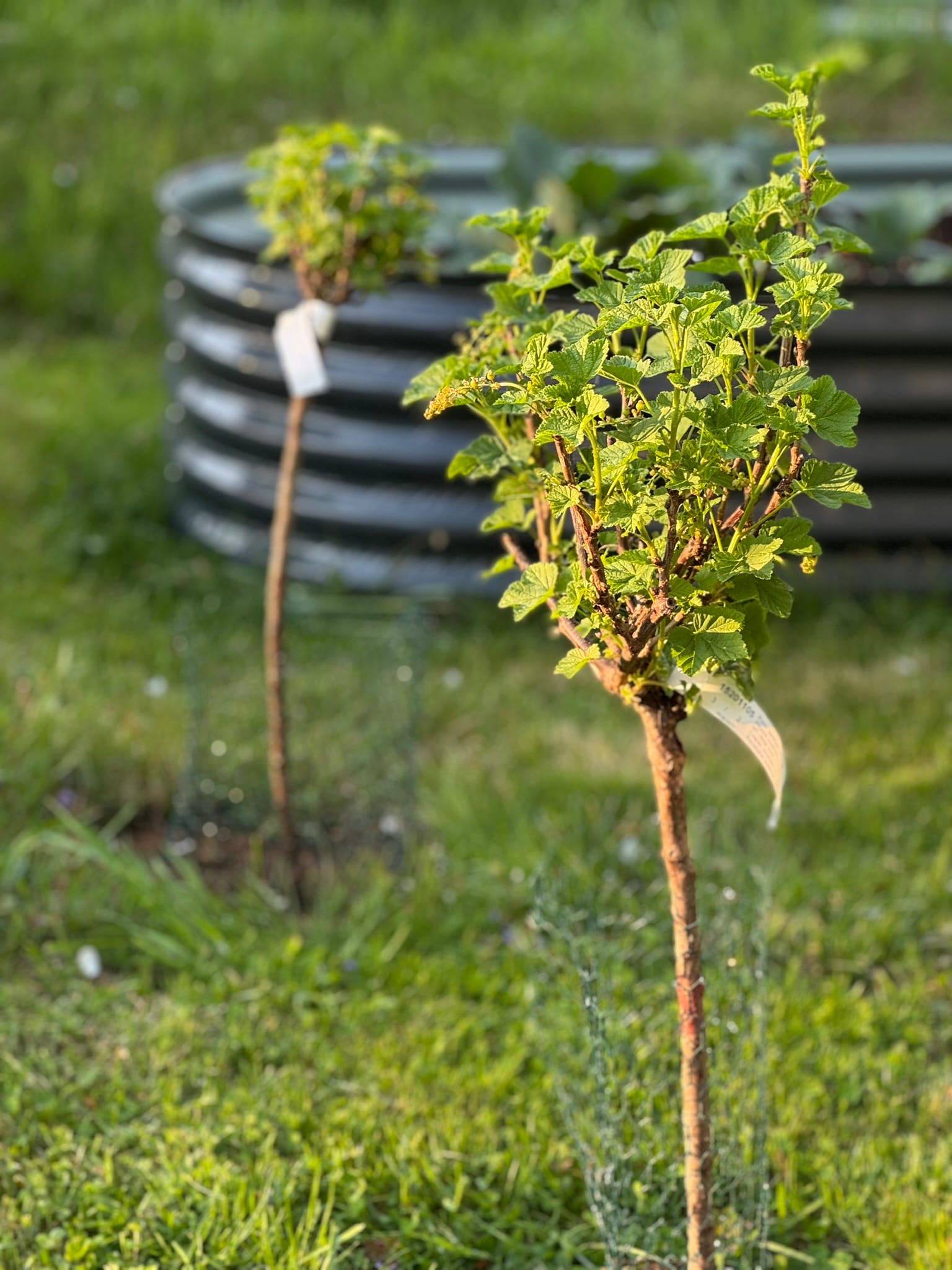
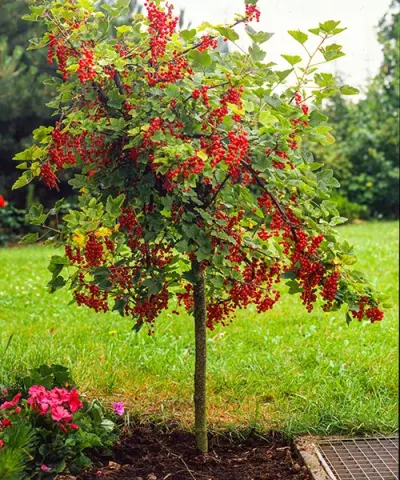
But the currants are not the only thing I got there. In my paranoid episode, I also bought two pillar-shaped cherry trees. I chose that particular shape, originally pruned and shaped for balconies, because I expect more temperature swings in the future, and protecting such a small tree is much easier than protecting a large one.
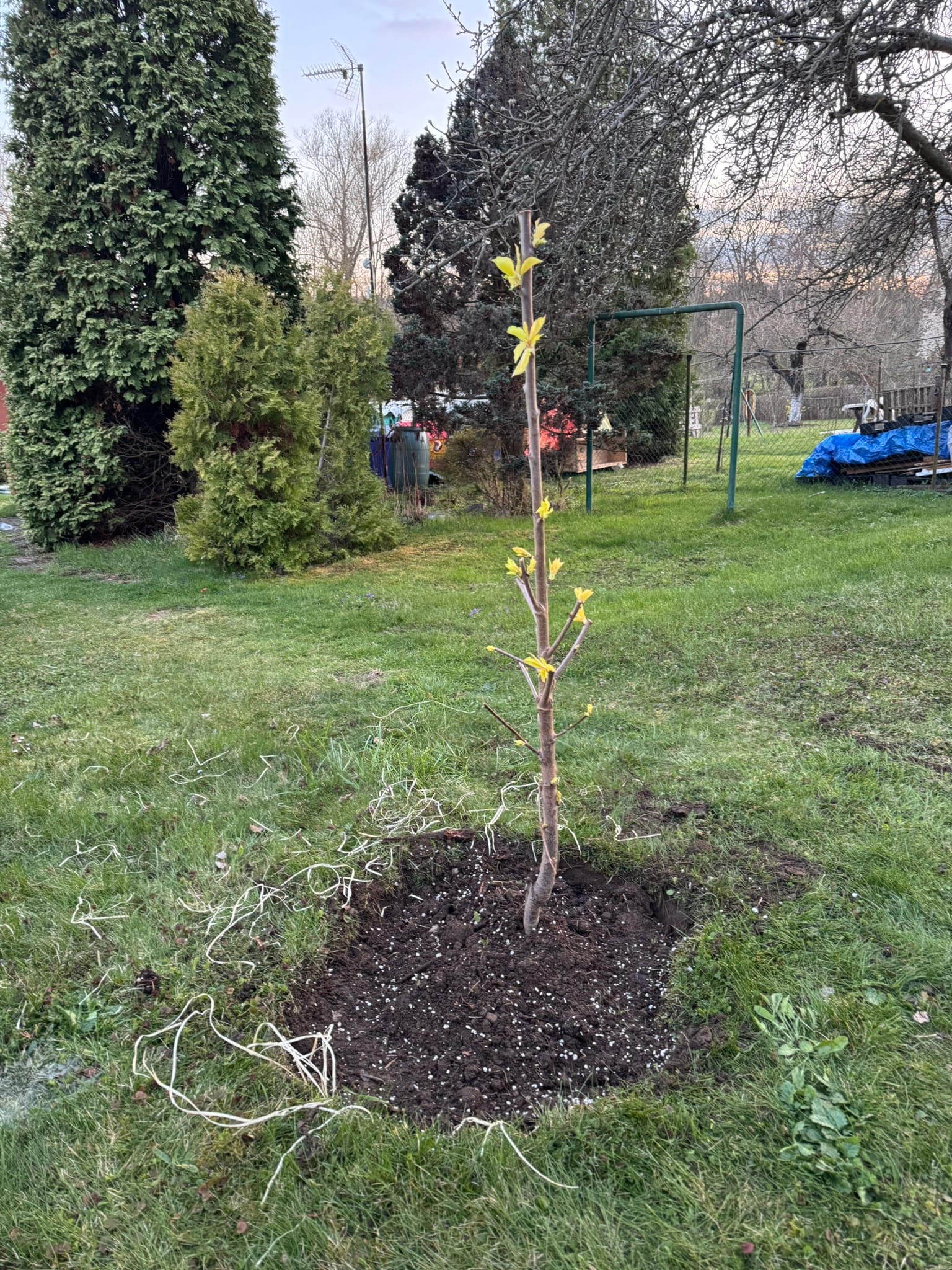
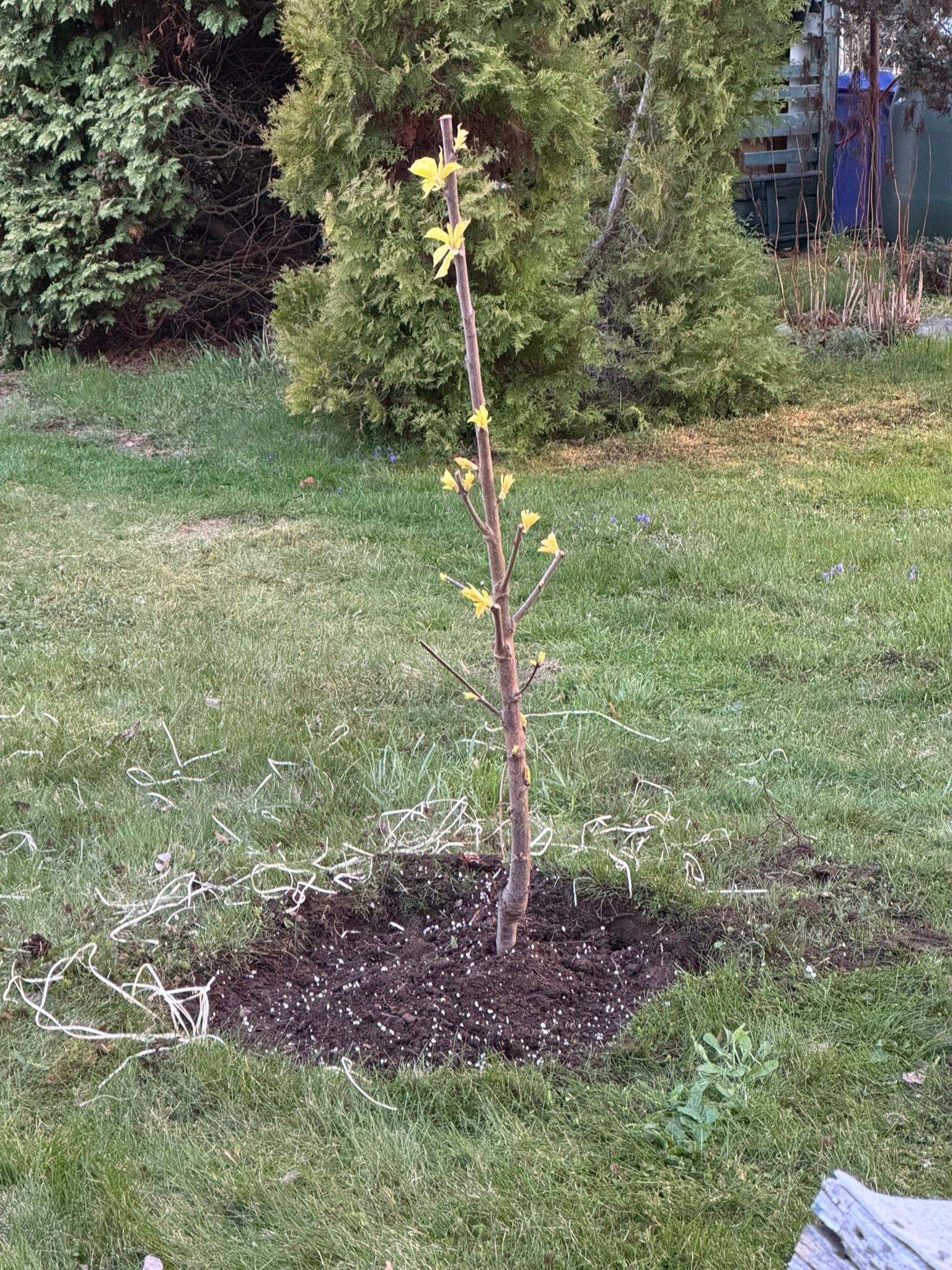
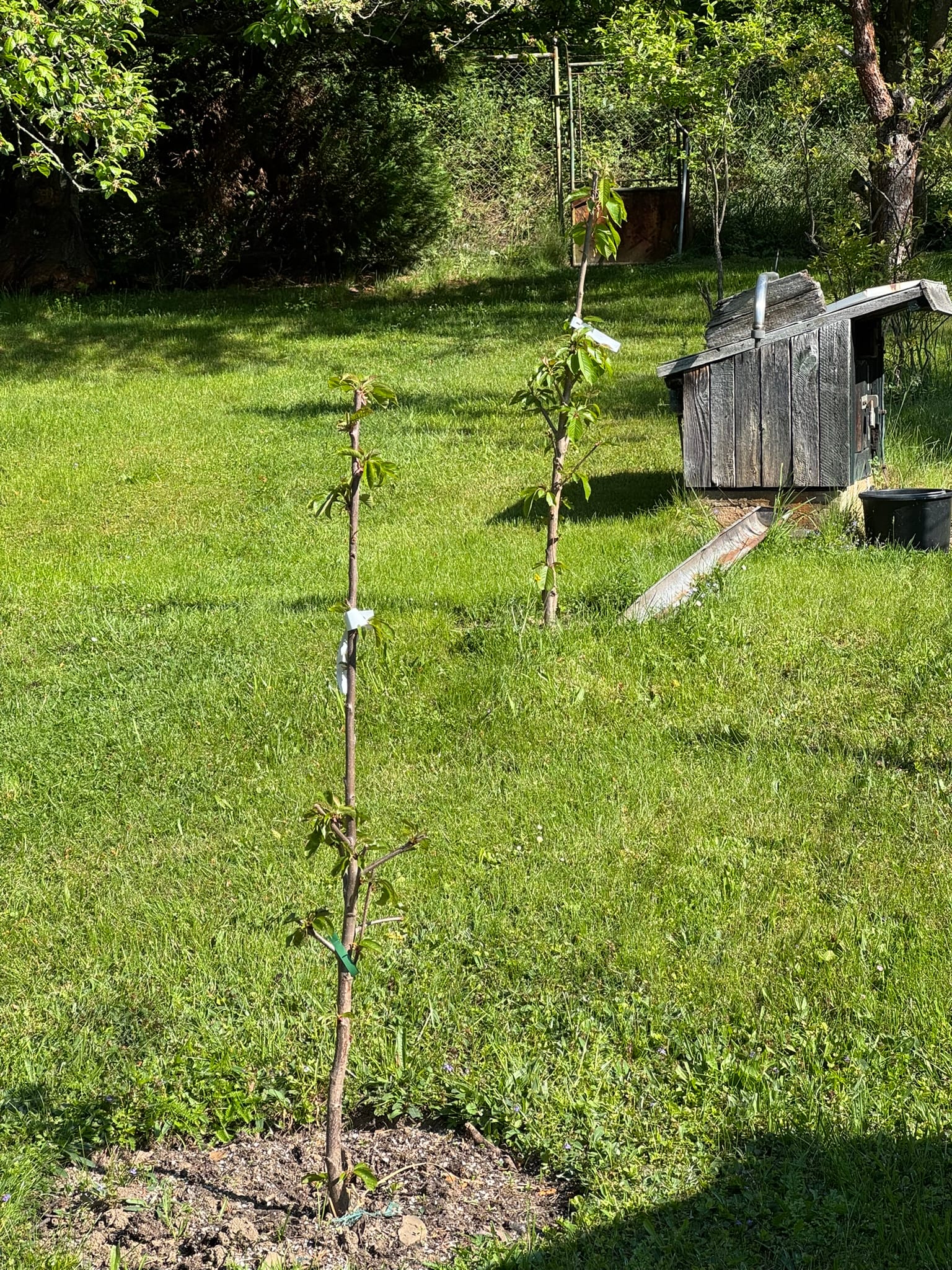

the crop
Ah, yes, the old saying that potatoes should be outside before May 1st. After last year's successful experiment with potatoes in bags, I’ve decided to increase the number of bags and the number of potatoes in each bag. The larger bag can easily host up to five seed spuds. But to keep them inside, you need a whole bag, which is somewhat of a luxury in my garden for some reason. Over the winter, some mice got into my stash of bags and decided it was the best material to build a nest out of. Now I have a bag with a ventilation hole.
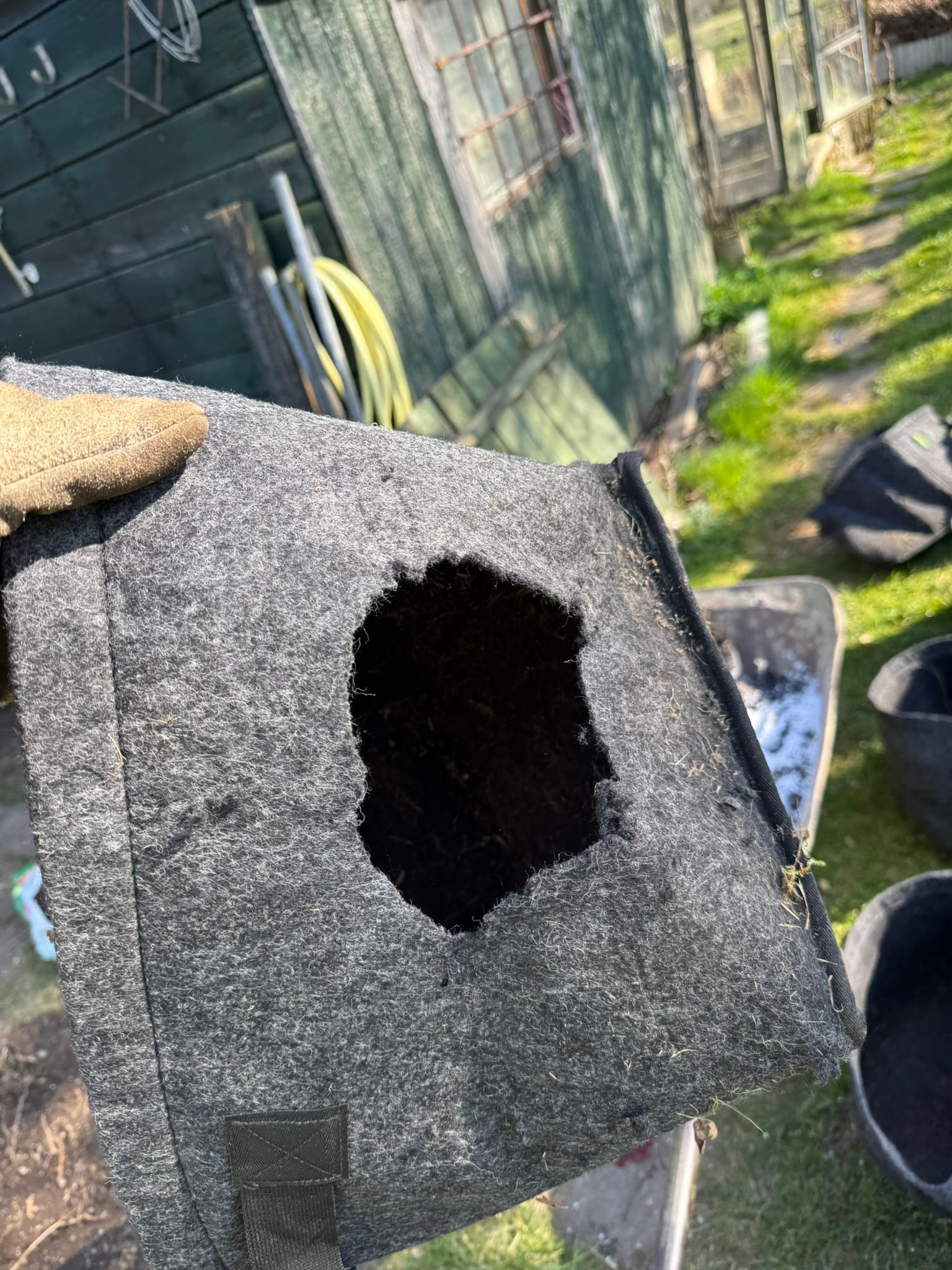
I’ve patched the hole with some netting material and ordered more bags. However, I’m dedicated to using them this season no matter what.

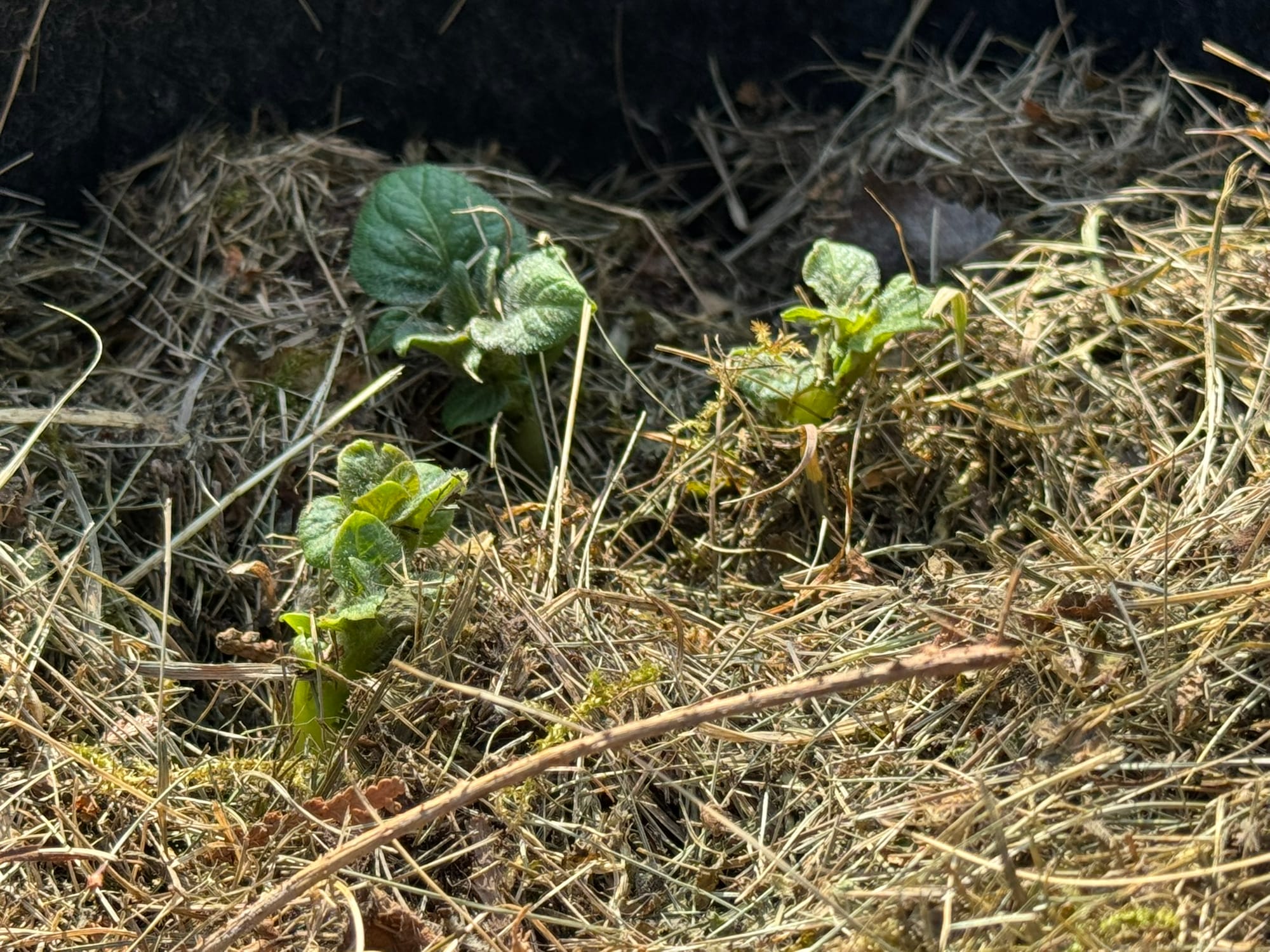
During my shopping spree, I bought two bags of seed potatoes, 20 kg altogether, and I was left with quite a few potatoes for which I had no place. I quickly consulted the internet and decided to run a different experiment this year. I dropped all the remaining potatoes on the grass, sprinkled some peaty soil on them, and covered them heavily with grass clippings. I don’t expect much from this experiment, but I’ve seen people grow potatoes like this with zero effort. Let’s see how it ends up.
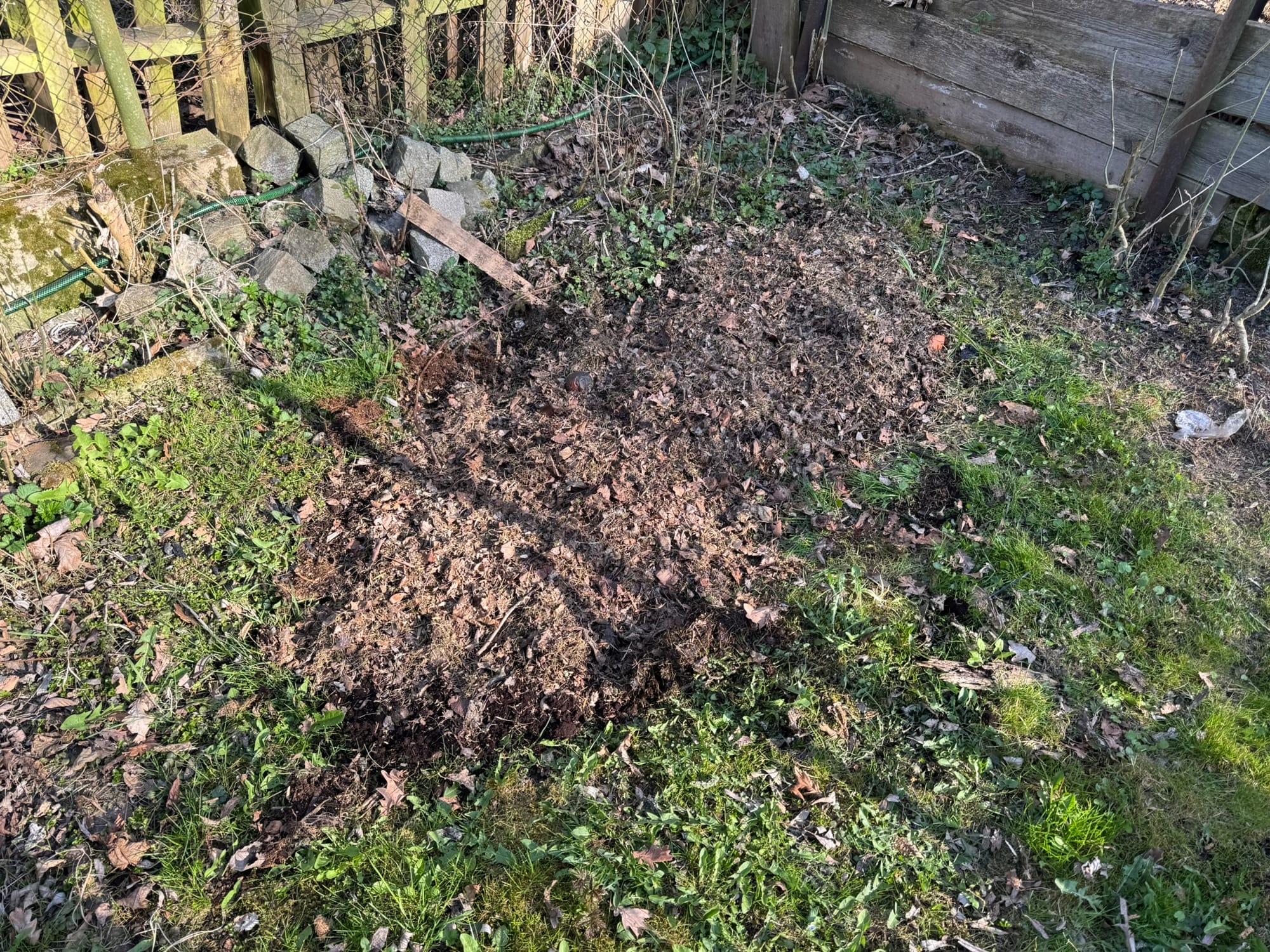
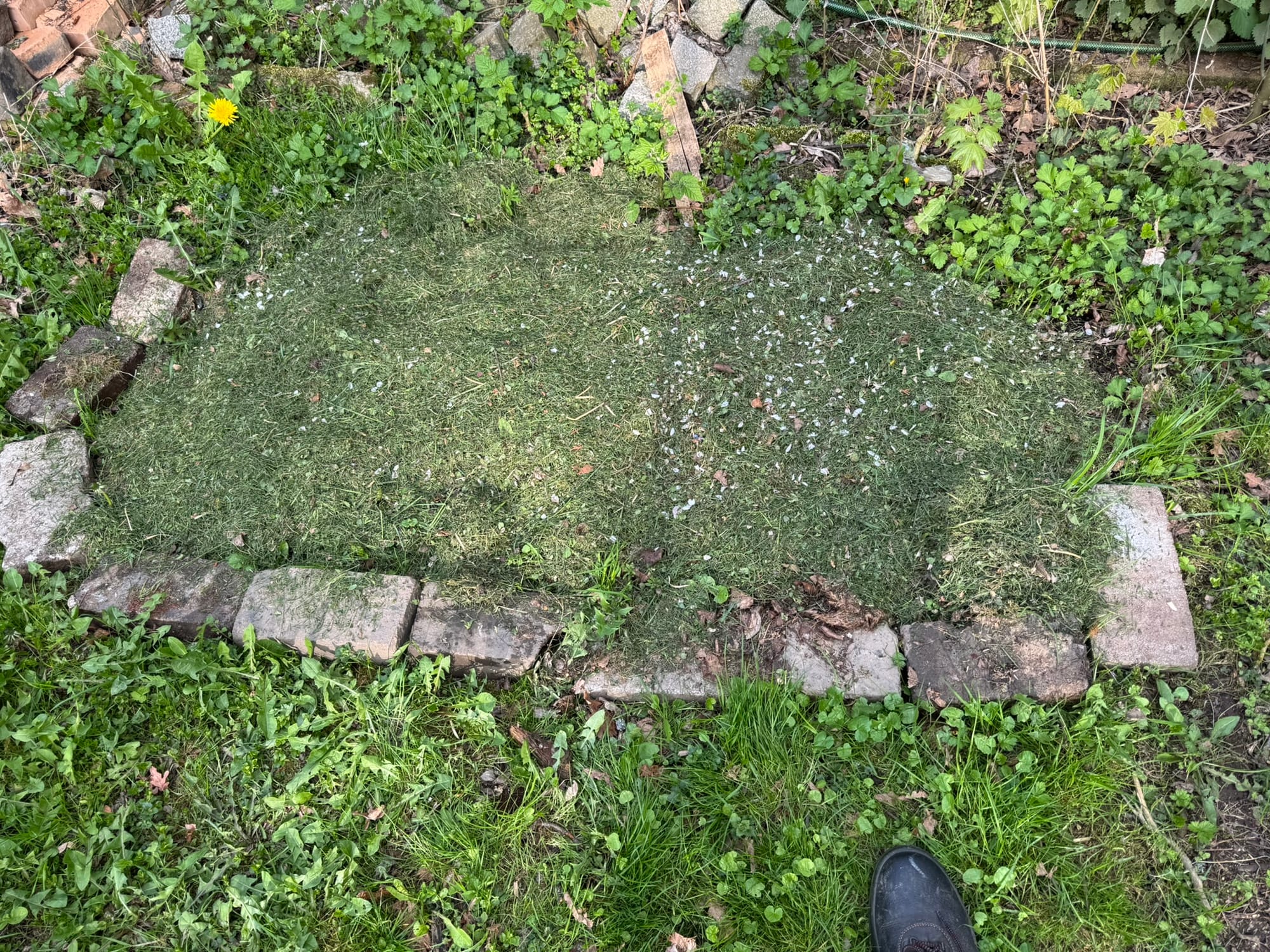
the grounding
The garlic is growing like crazy and, as mentioned last time, I’ve sown radishes in the space between. We had some warm weather during the month, which helped a lot with the initial growth. In just a month, I already have some red bulbs, just one or two weeks from harvest.
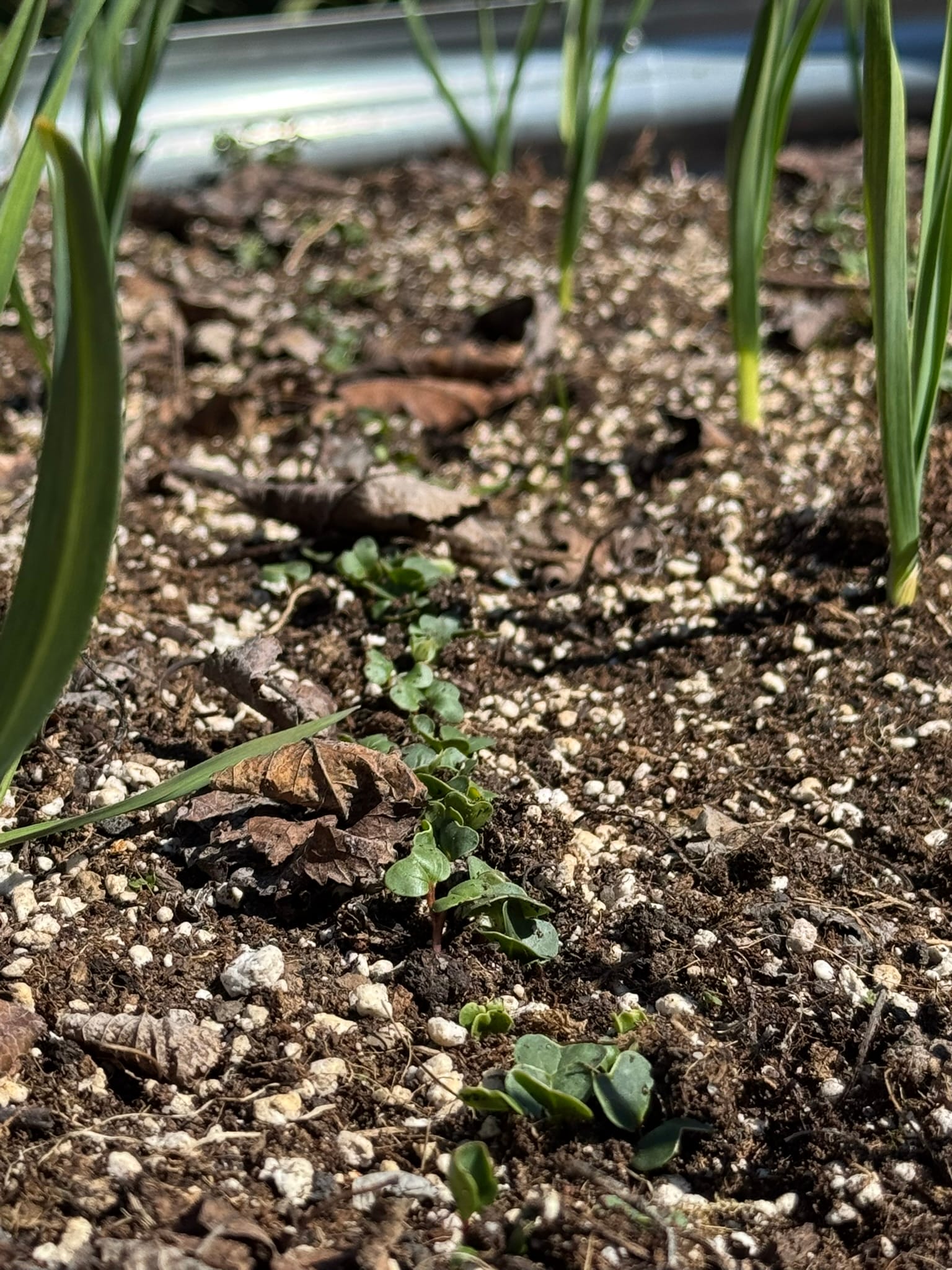
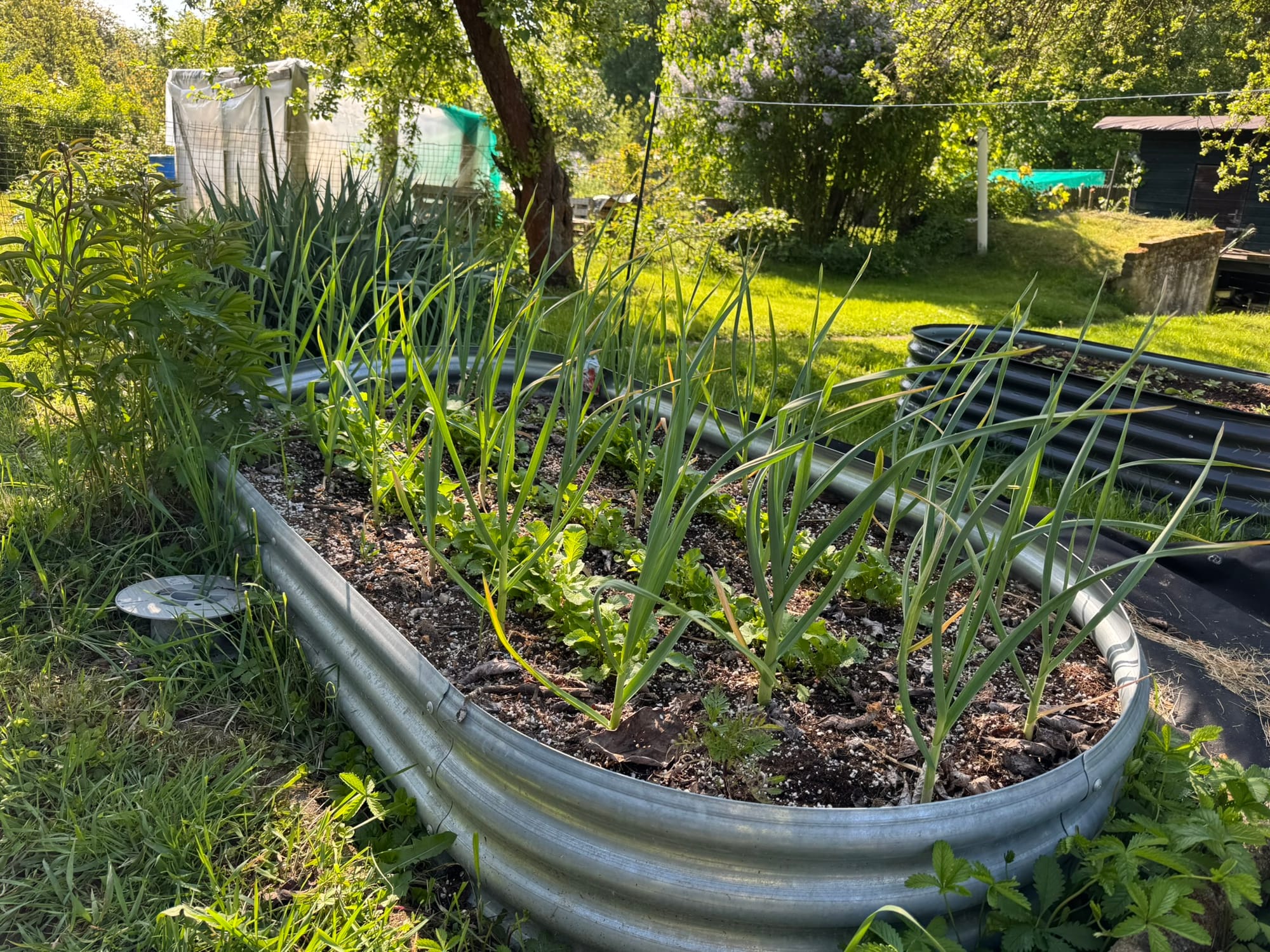
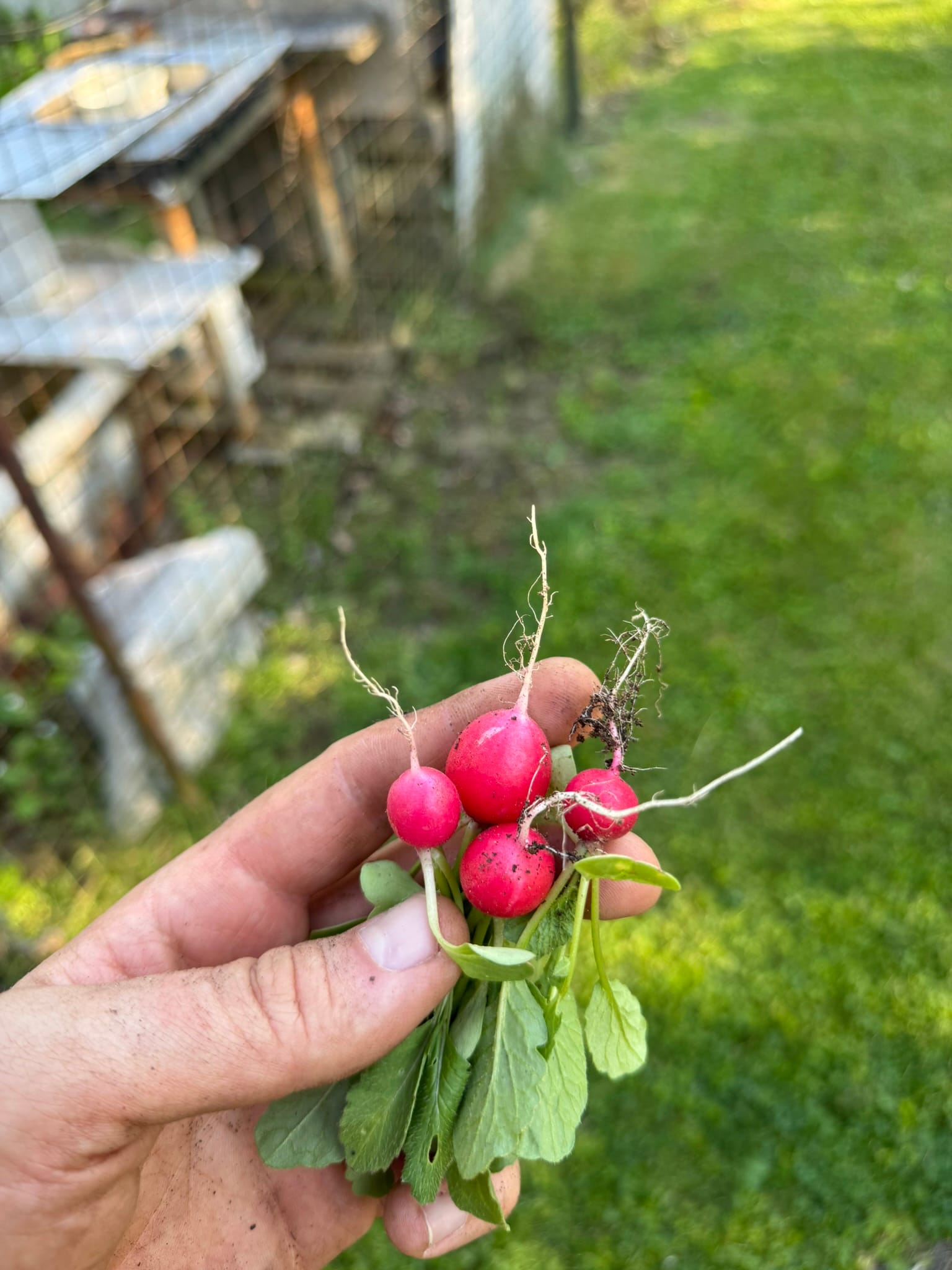
The same applies to red onions, just one bed forward. These jump from zero to hero like nothing, but unlike the garlic, I’ve decided to interplant some carrots in between.
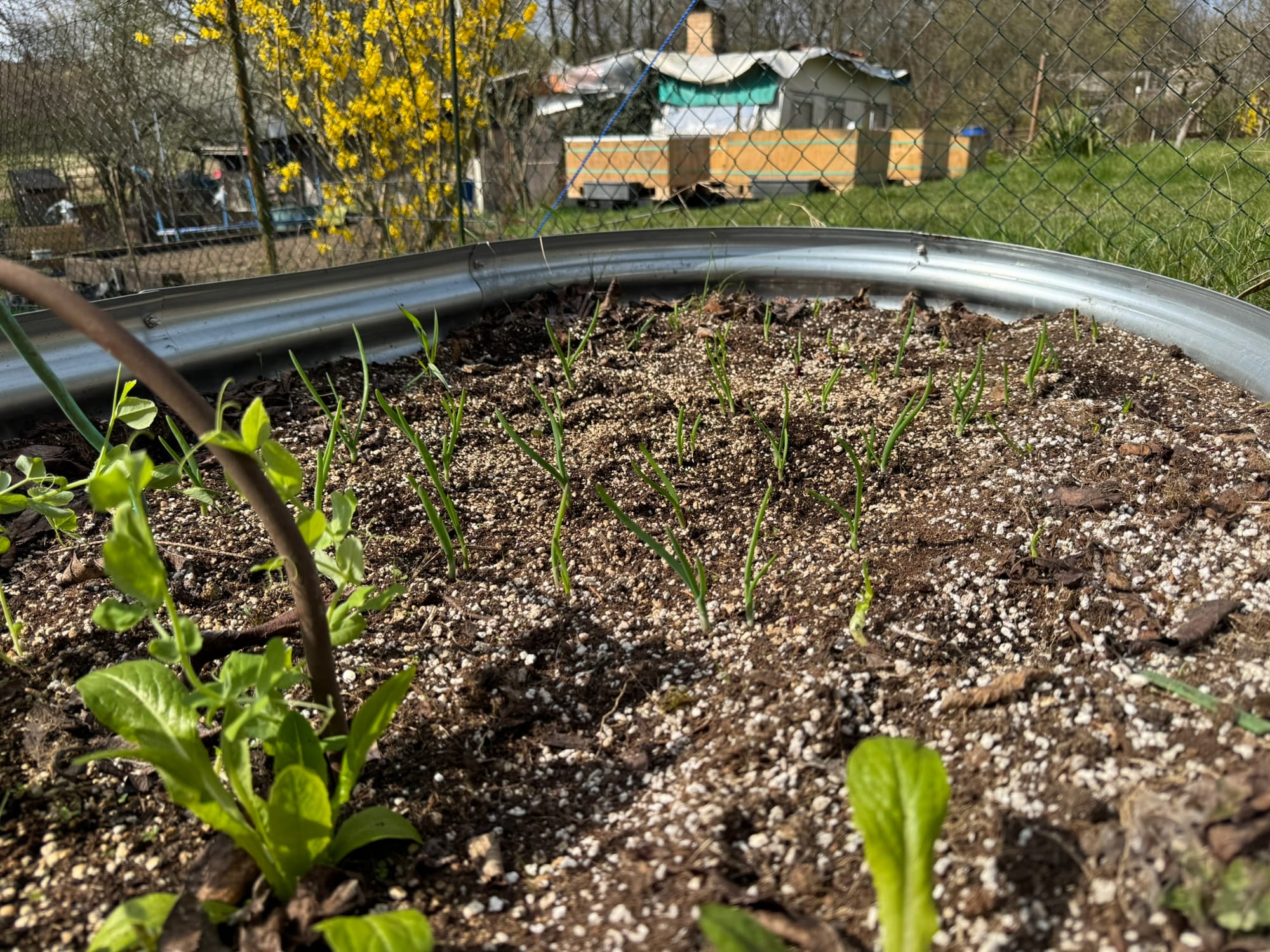
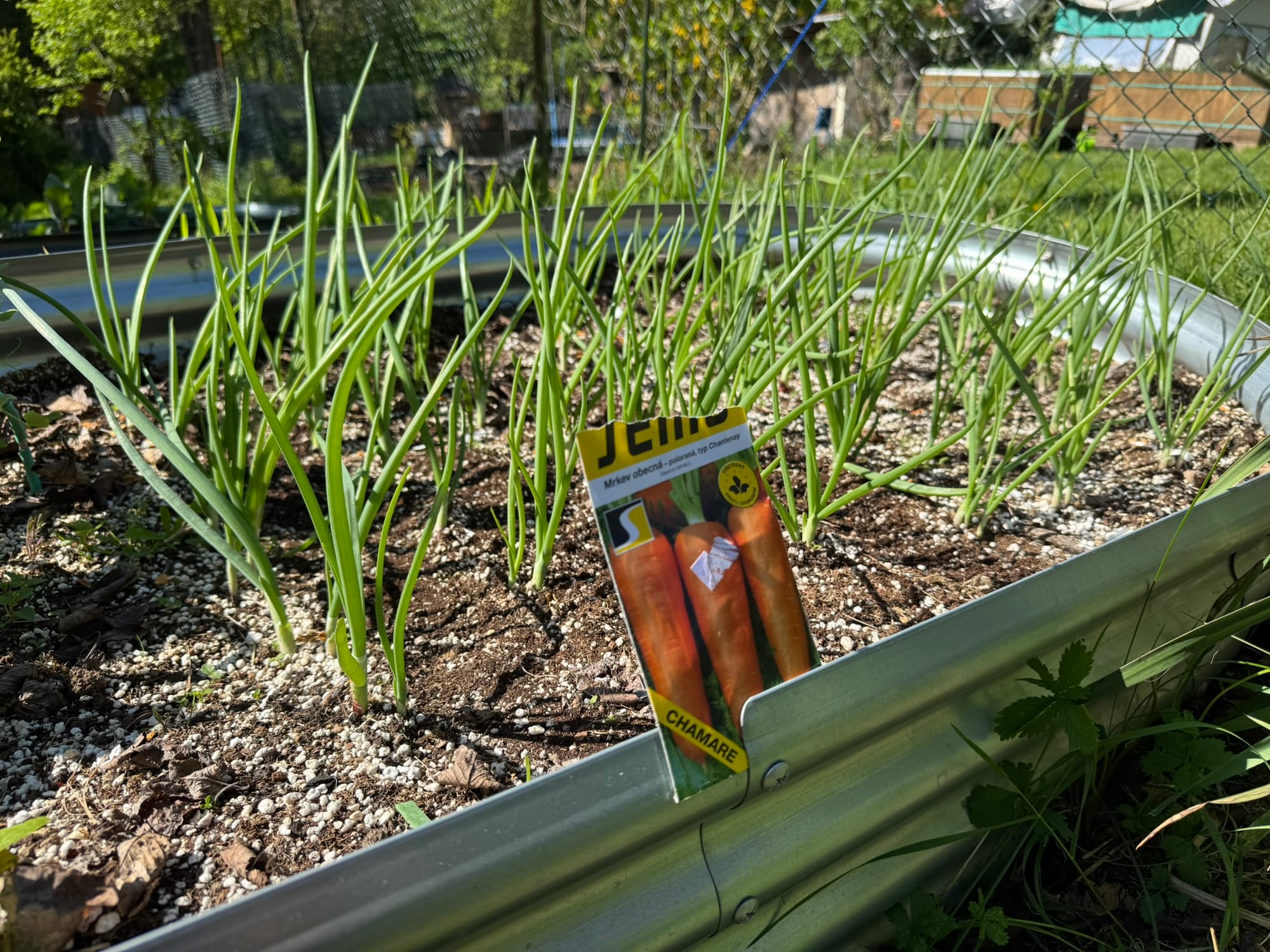
And here's one tip for anyone who struggles with carrots like me all the time: Soak the seeds two days before the planned sowing and then mix them with a decent amount of sand. This way, not only do you see where you already have seeds in the ground, but it also makes the spacing between seeds more even, and you won’t have to prick them that much.

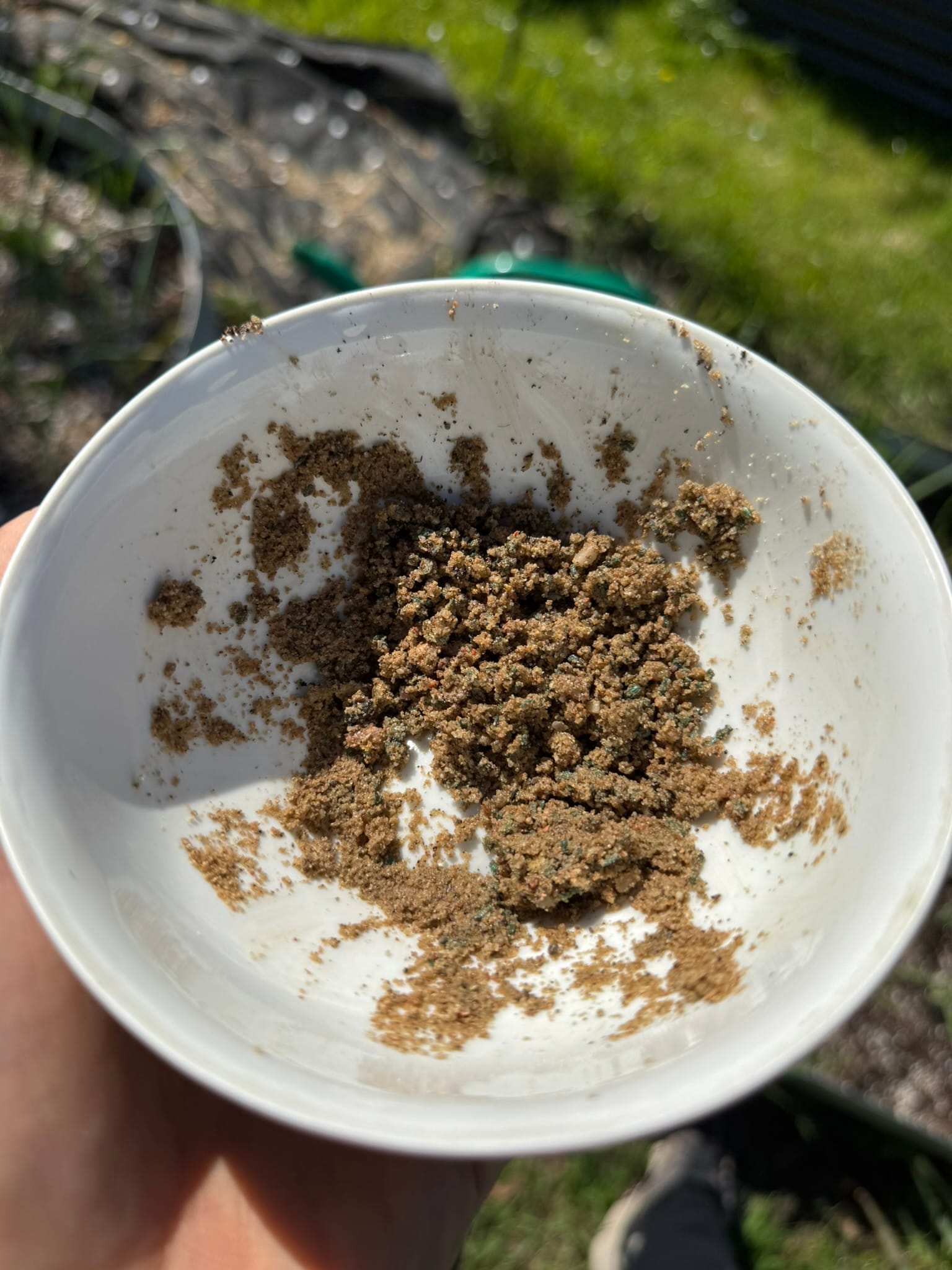
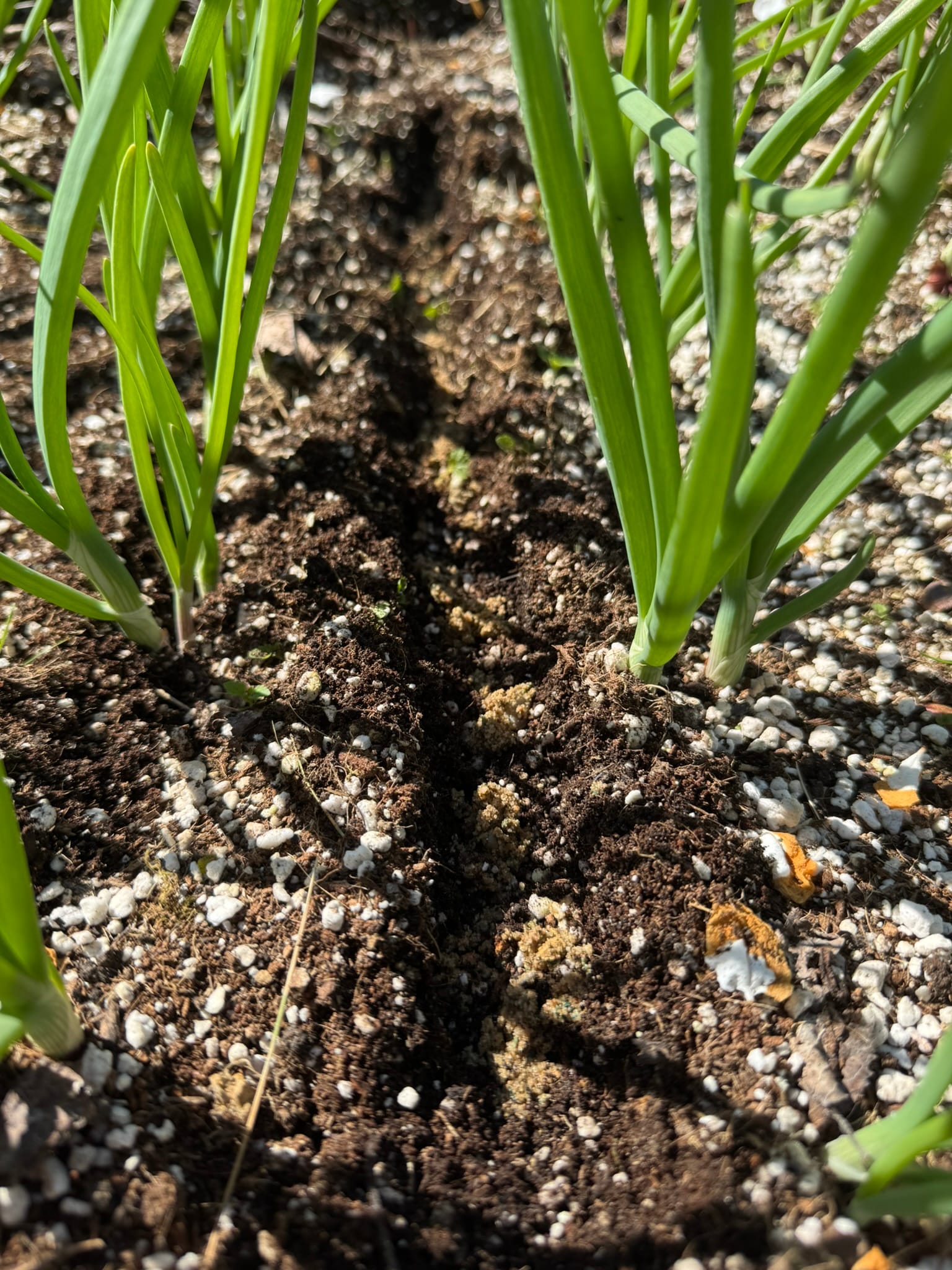
Speaking of carrots, in my other bed, where I also grow radishes (unsurprisingly), I have sown a very interesting variety. It’s called Parmex, and it’s a bulb carrot. The root doesn’t reach deep enough to hit my weed barrier there, but it should grow more widely, just like a radish or a beet. I can’t wait to see how that’s going to end up.

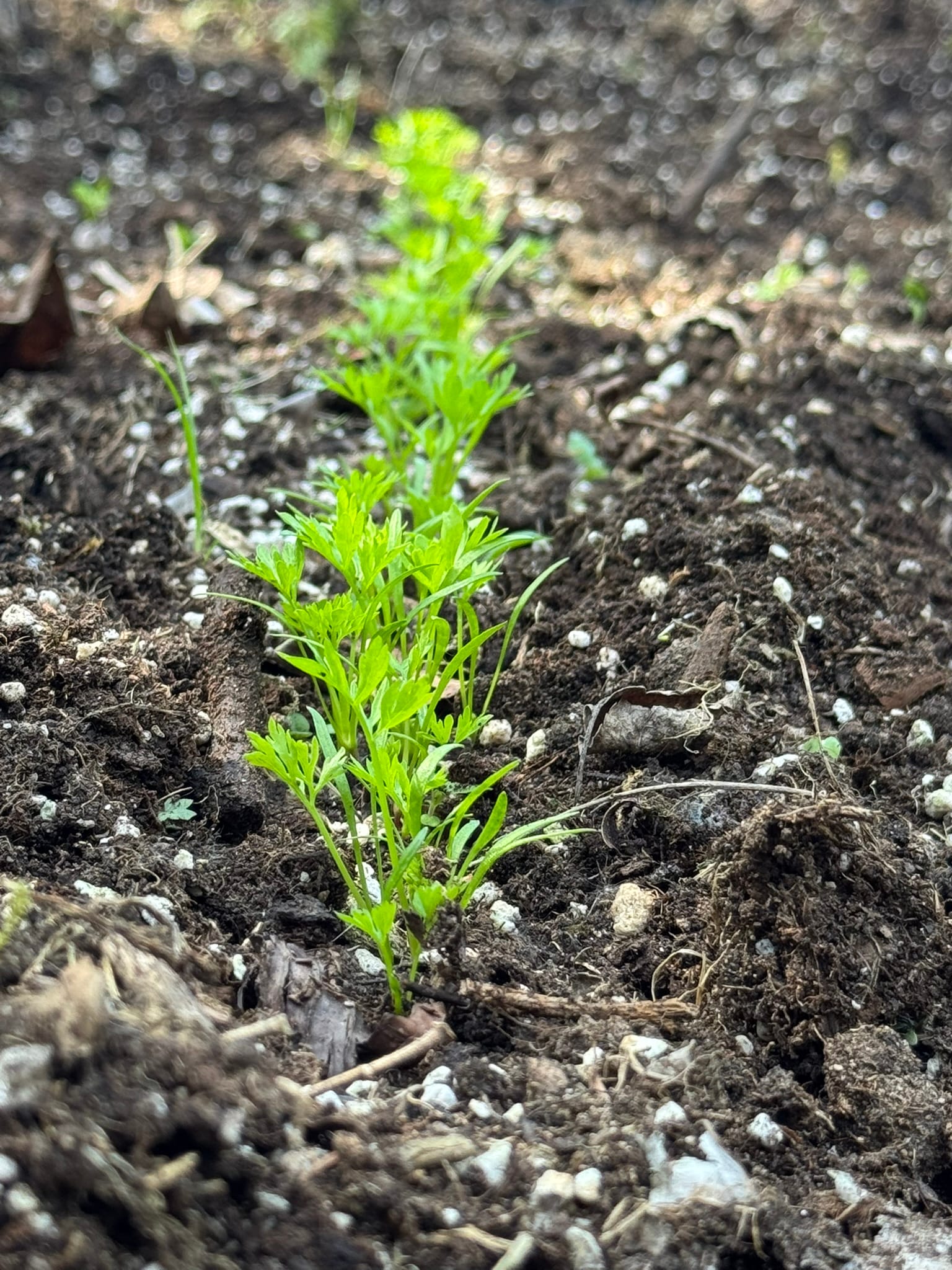

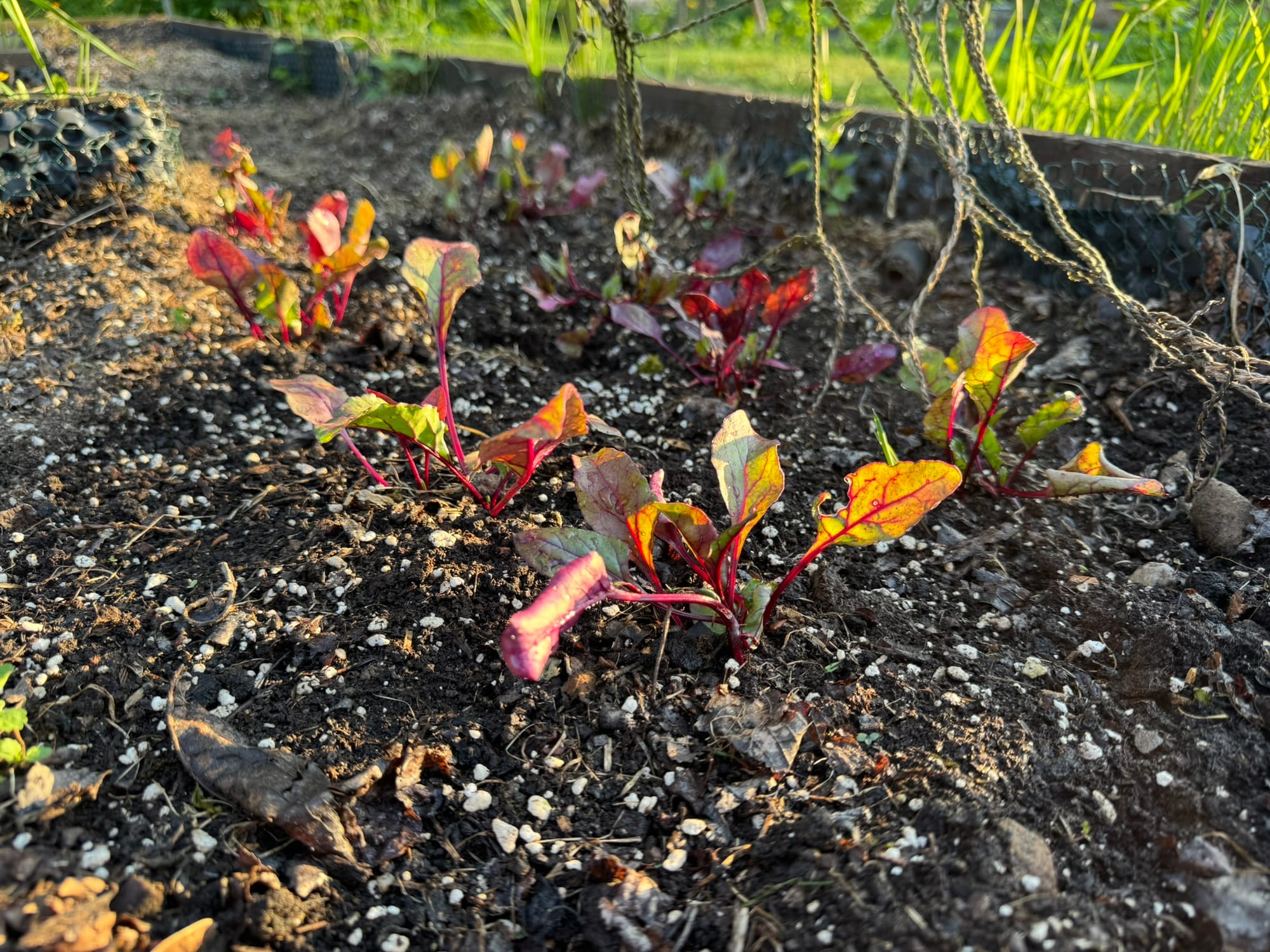
In the bed with red onions, the salads are slowly getting ready to eat, and I finally see some flowers on my peas. But I also see some rogue mushrooms growing in there, and I have no idea what they could be. Nonetheless, I don’t want them there. Off they go.
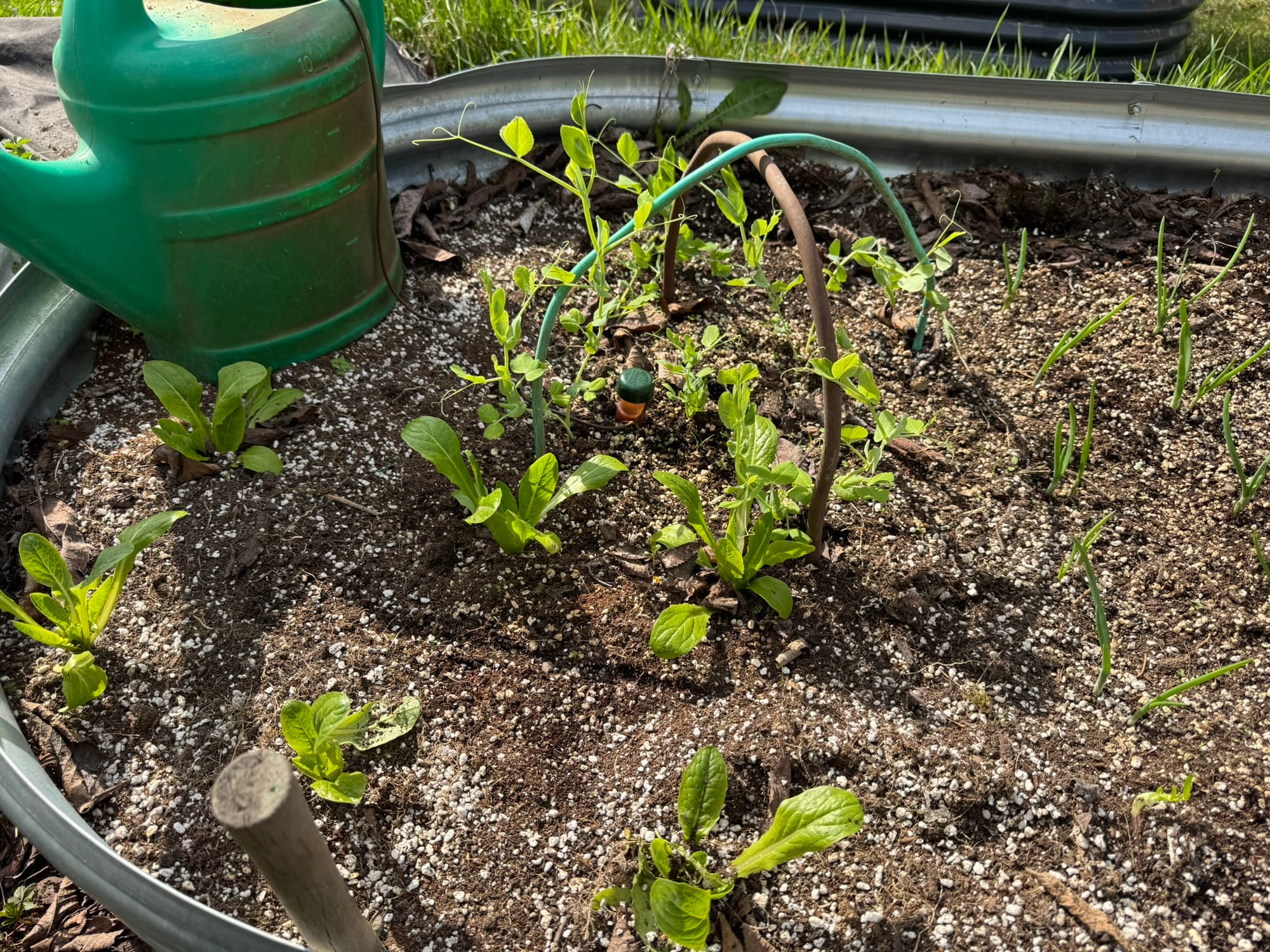
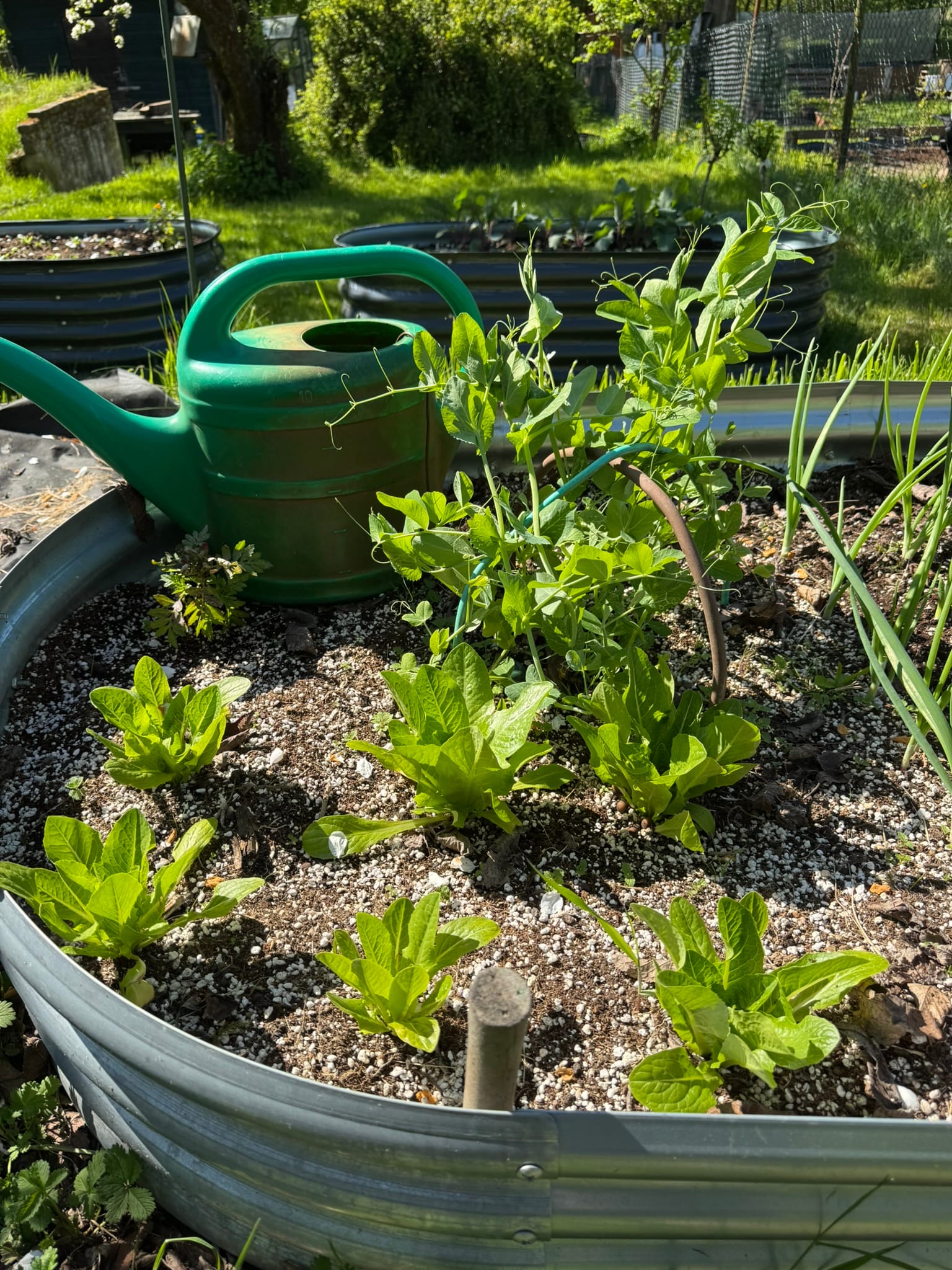
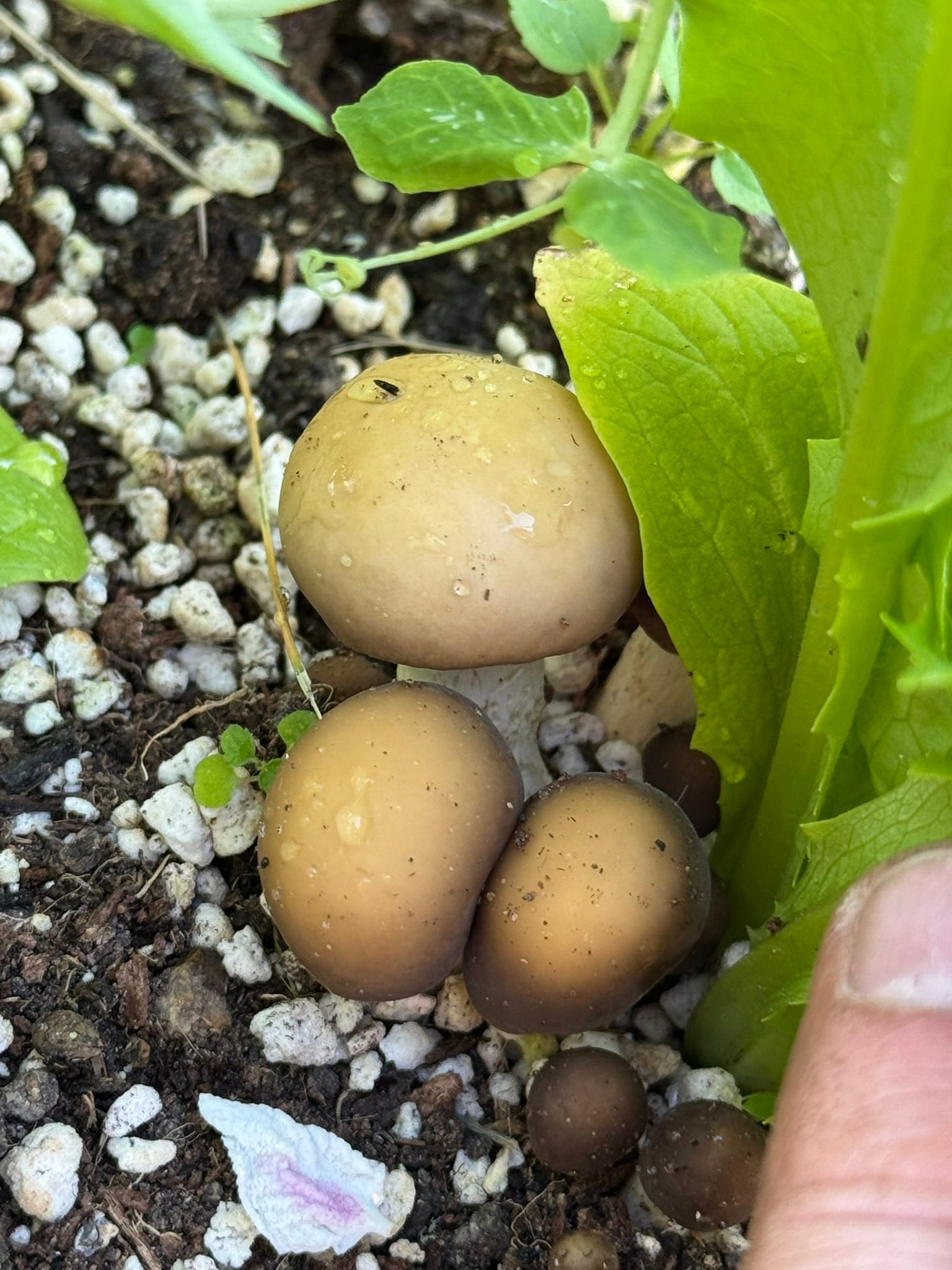
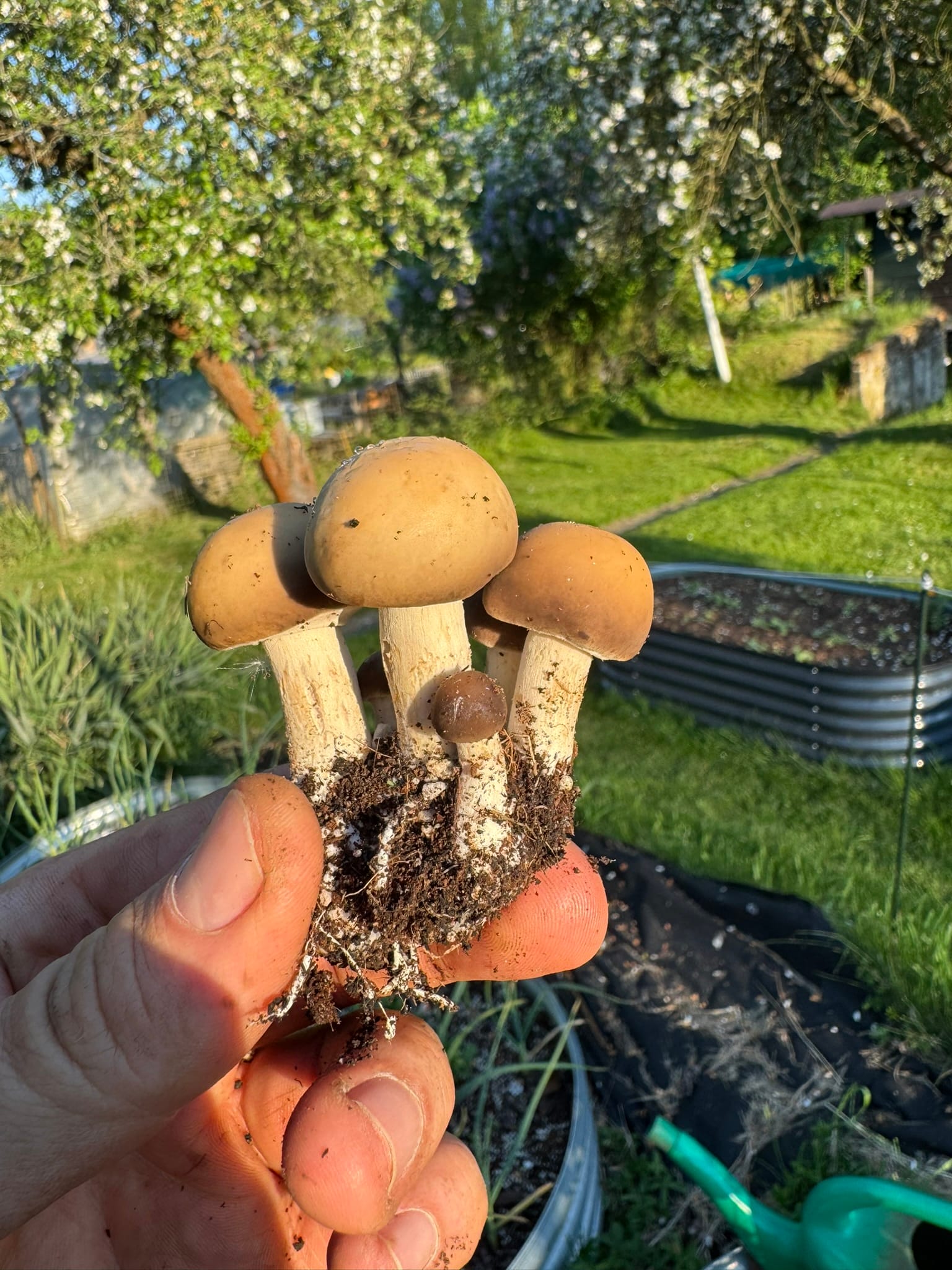
And how is the new real estate doing? Well, I put some radishes there, but I bought a strip-seed pack in a rush. That’s a pack where the seeds are placed on biodegradable fabric, spaced evenly. The idea is that you put the strip into the ground and leave it be. But I don’t like them. You have no control over the seed quality, you can’t prick them and select only the strong ones, and in the end, you are left with a patchy bed.
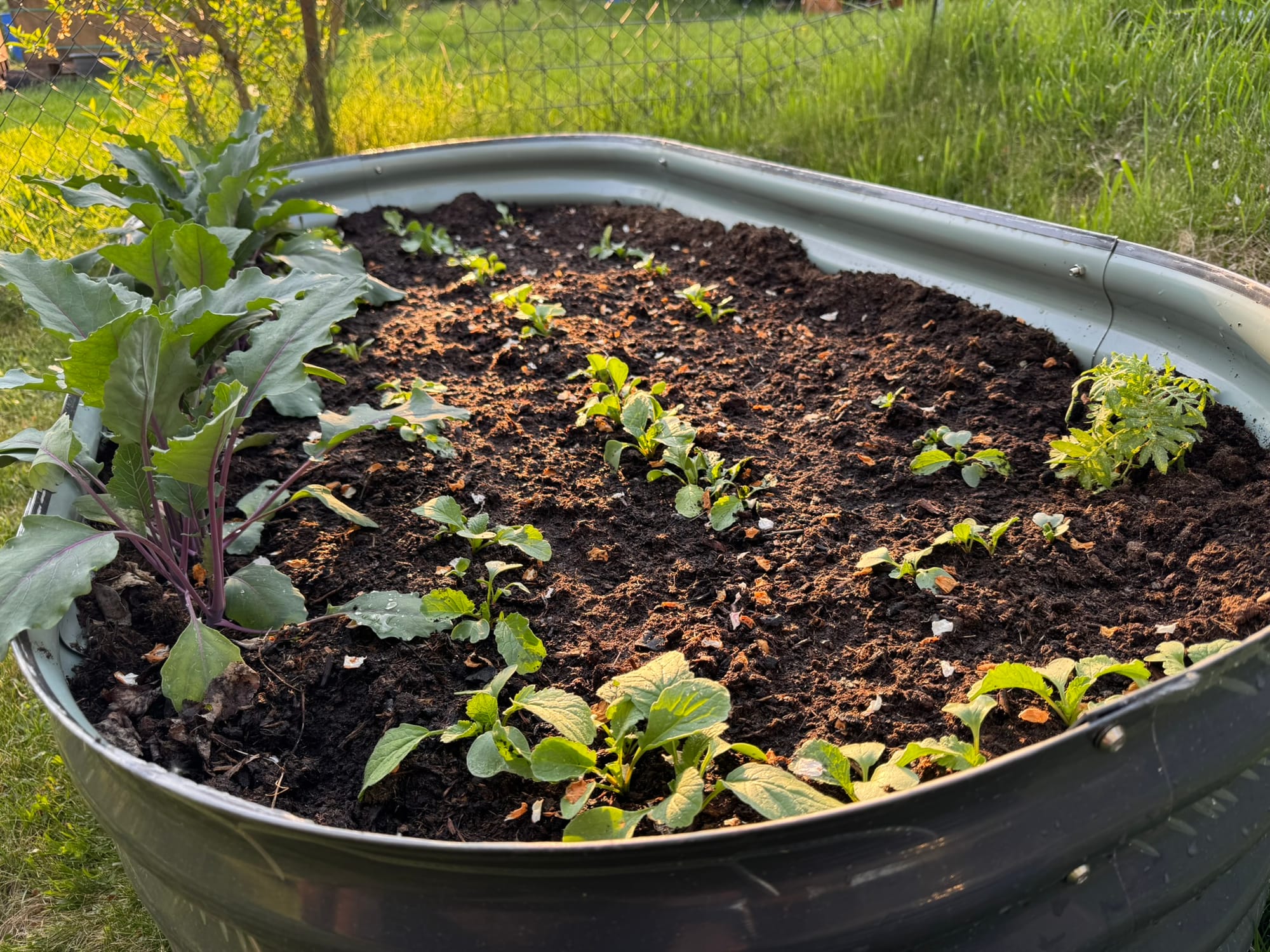
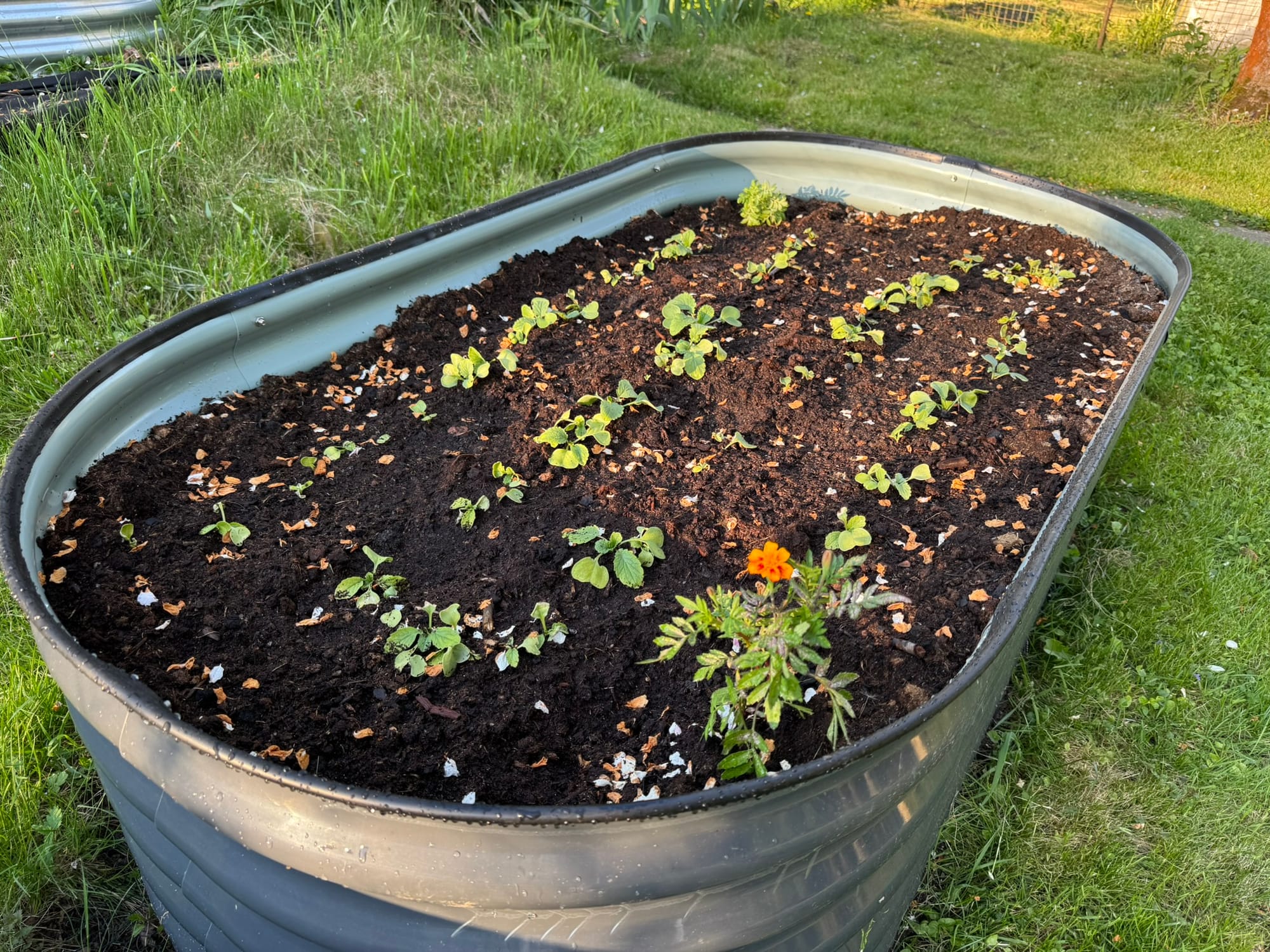
What is not patchy at all is kohlrabi. These absolutely love the place. A lot of sun, cold nights, enough moisture. I can already see some bulbs forming. I only hope they will be ready to eat before the bed is overtaken by winter squash and corn. Yes, corn. This year I am experimenting with corn. It should go nicely with the winter squash as a companion plant.
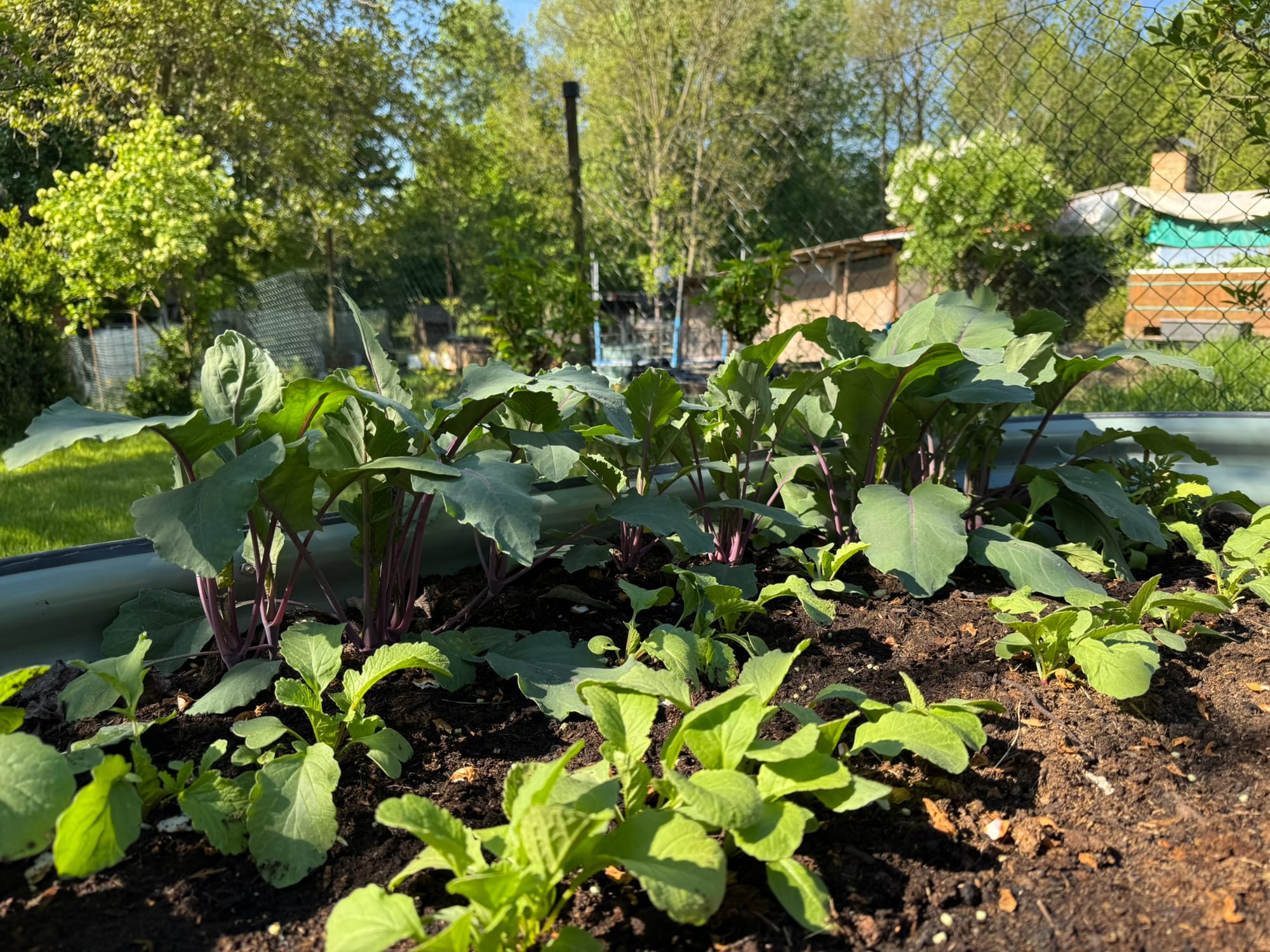
the inside job
I have a confession to make. I messed up. I had to leave for two days, forgot when the last time I watered my bell peppers, and watered them twice, heavily. And they didn’t like it at all. Leaves drooped and fell off, and the growth was generally stunted. Most of them were able to recover, but I still have some in “intensive care.”
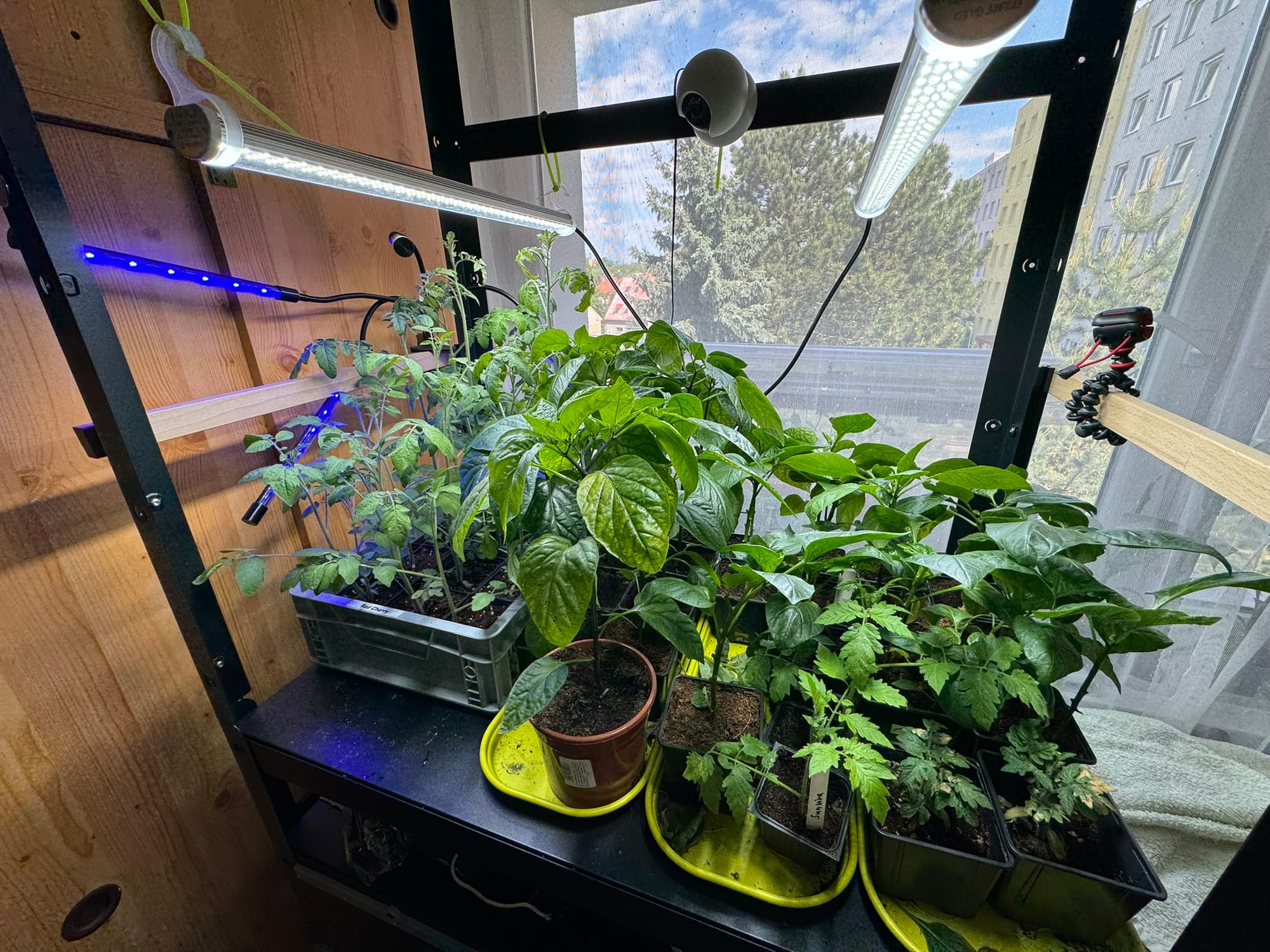
I’ve decided to put some of the affected peppers into my greenhouse and let them show their will to live. The risk of frost inside is minimal, and by doing this, I will quickly know if I have to buy some seedlings as a last resort to replace the dead ones.
Mistakes happen, we learn, and I will make sure next time to double-check the soil moisture. What’s fine, on the other hand, are my other peppers. Habaneros are doing great. I can’t keep up with picking the flower buds they put on all the time, and I can’t wait to see them grow into the lush trees I’m used to. Same goes for the jalapeños. I even cloned some of them for experiments.
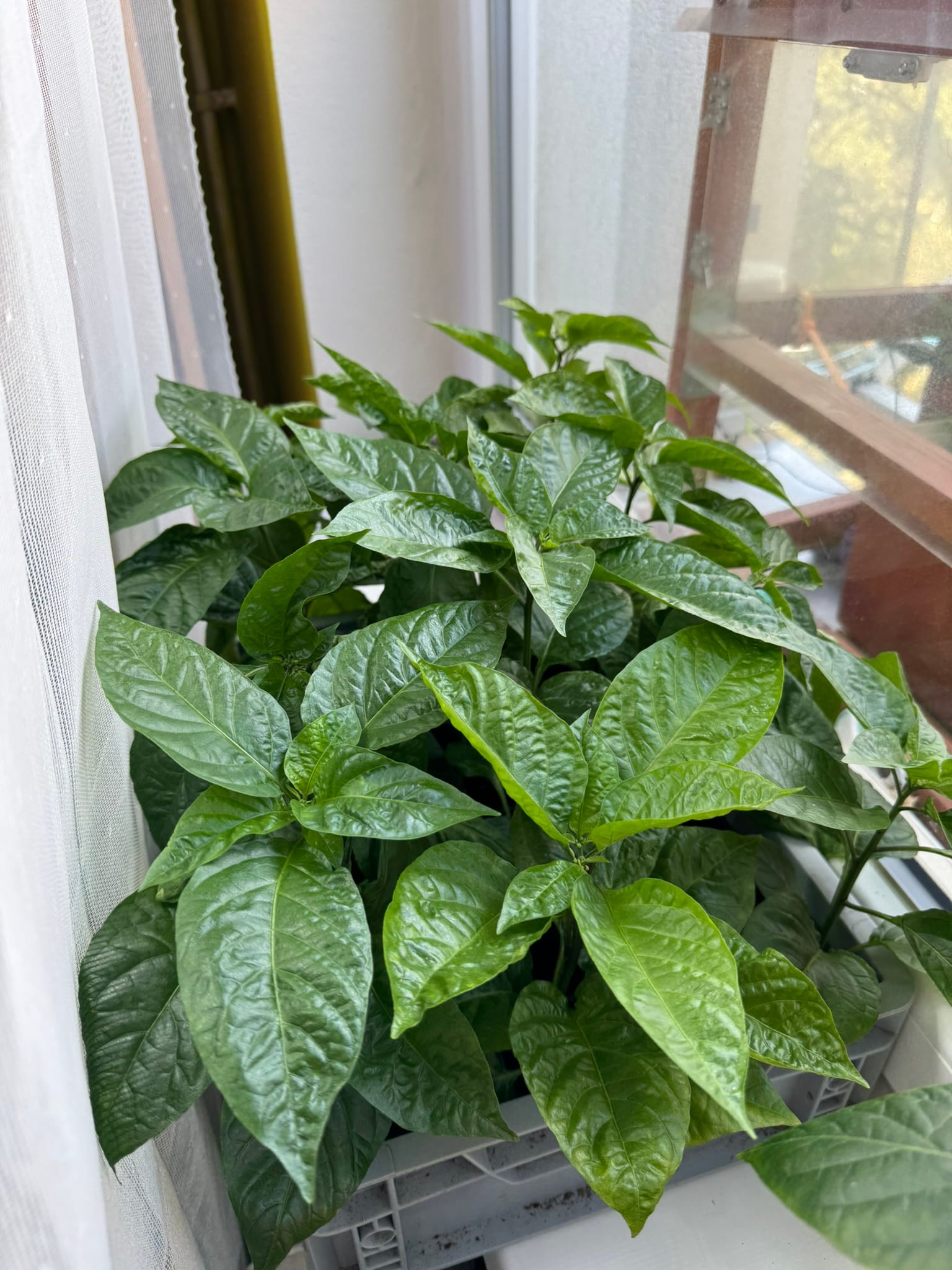
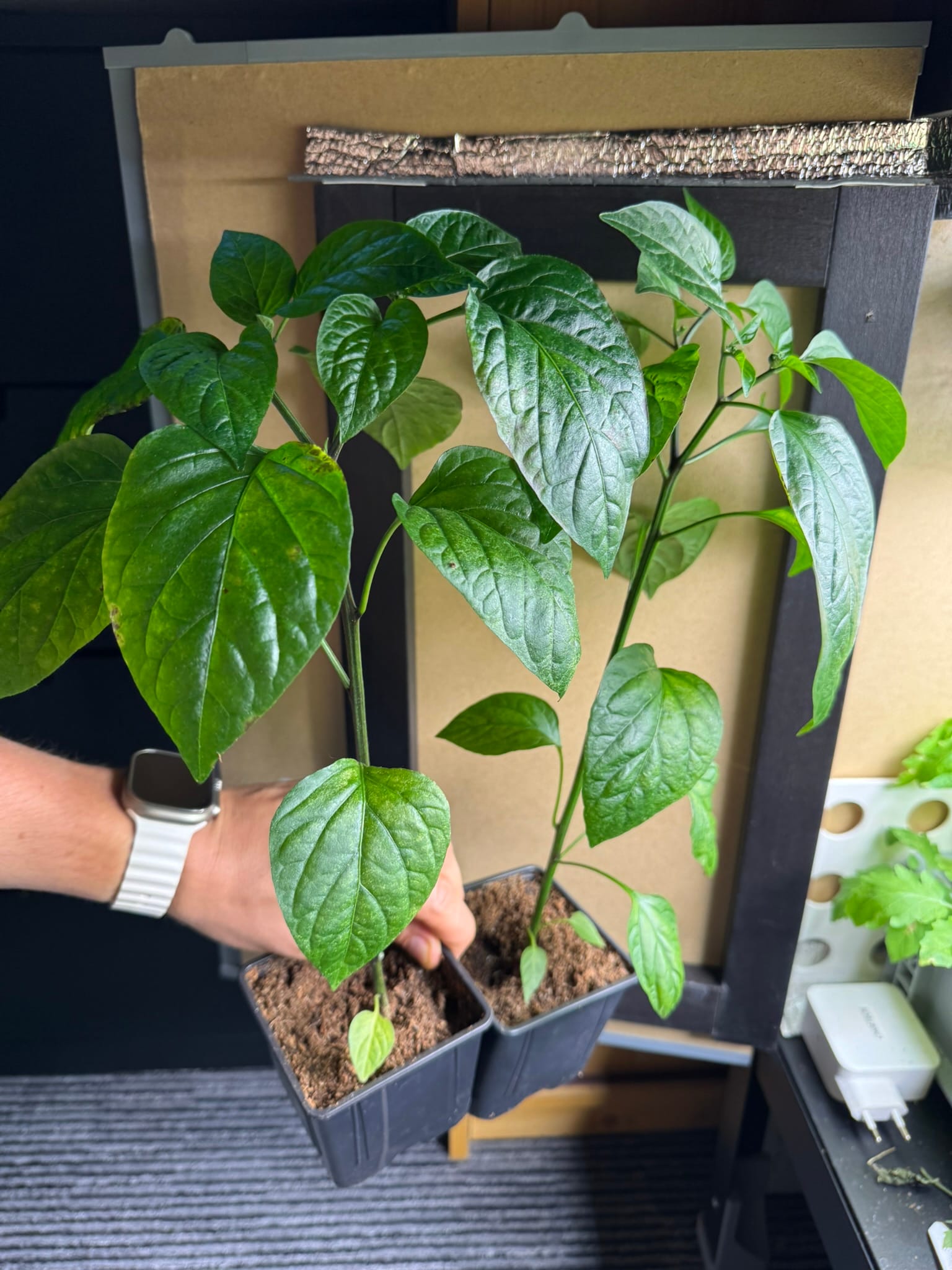
Box of Habaneros and two of my Jalapenos.
What’s also doing just fine, maybe too fine, are my tomatoes. The decision to grow six different varieties wasn’t the smartest. I expected the weather to be similar to last year’s, but the gods of global warming are taking their taxes from the previous season, and we actually have some cold weather here. Tomatoes are notorious for growing fast, especially if you give them enough heat. And my tomatoes have all the heat in the world, but even though I’m trying my best with the lighting, it’s never enough. Compared with peppers, however, you can torture tomatoes into submission and eventually make them stronger. I had to shorten them multiple times by simply crushing the stems and coiling them into the pot. This stresses the tomato so much that it panics. The growth is slowed for a few days, but eventually it speeds up again, and the crushed stem starts growing some roots.
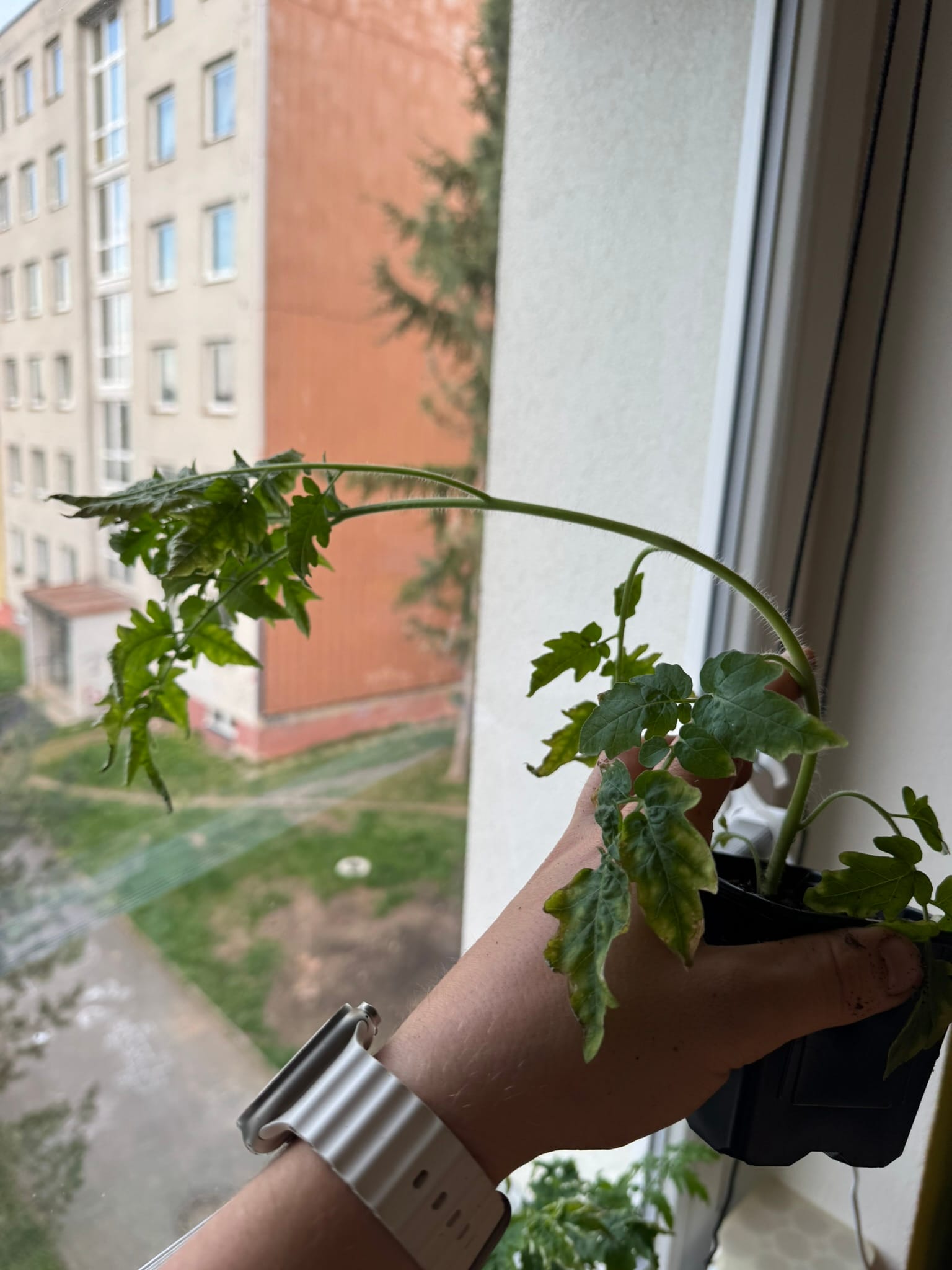
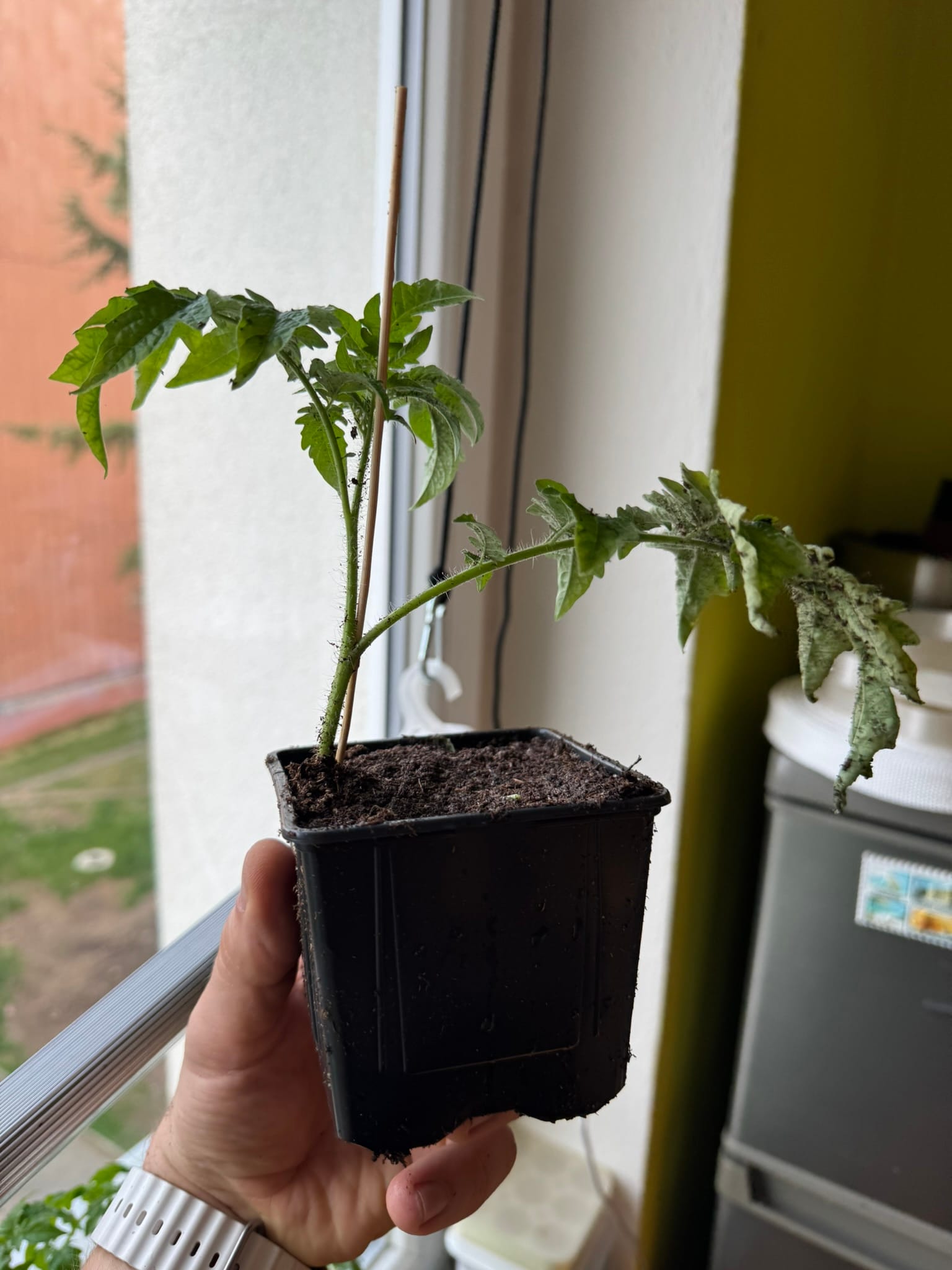
Same plant after repotting with crushed stem.
A little Clonex applied to the crushed stem helps speed things up. I have to warn you, this is a very dangerous thing, and you should apply only enough force to crush the stem, not to squish it or snap it. So be careful. However, the payoff is stronger plants with very large and healthy root balls that will accelerate the growth after transplanting.
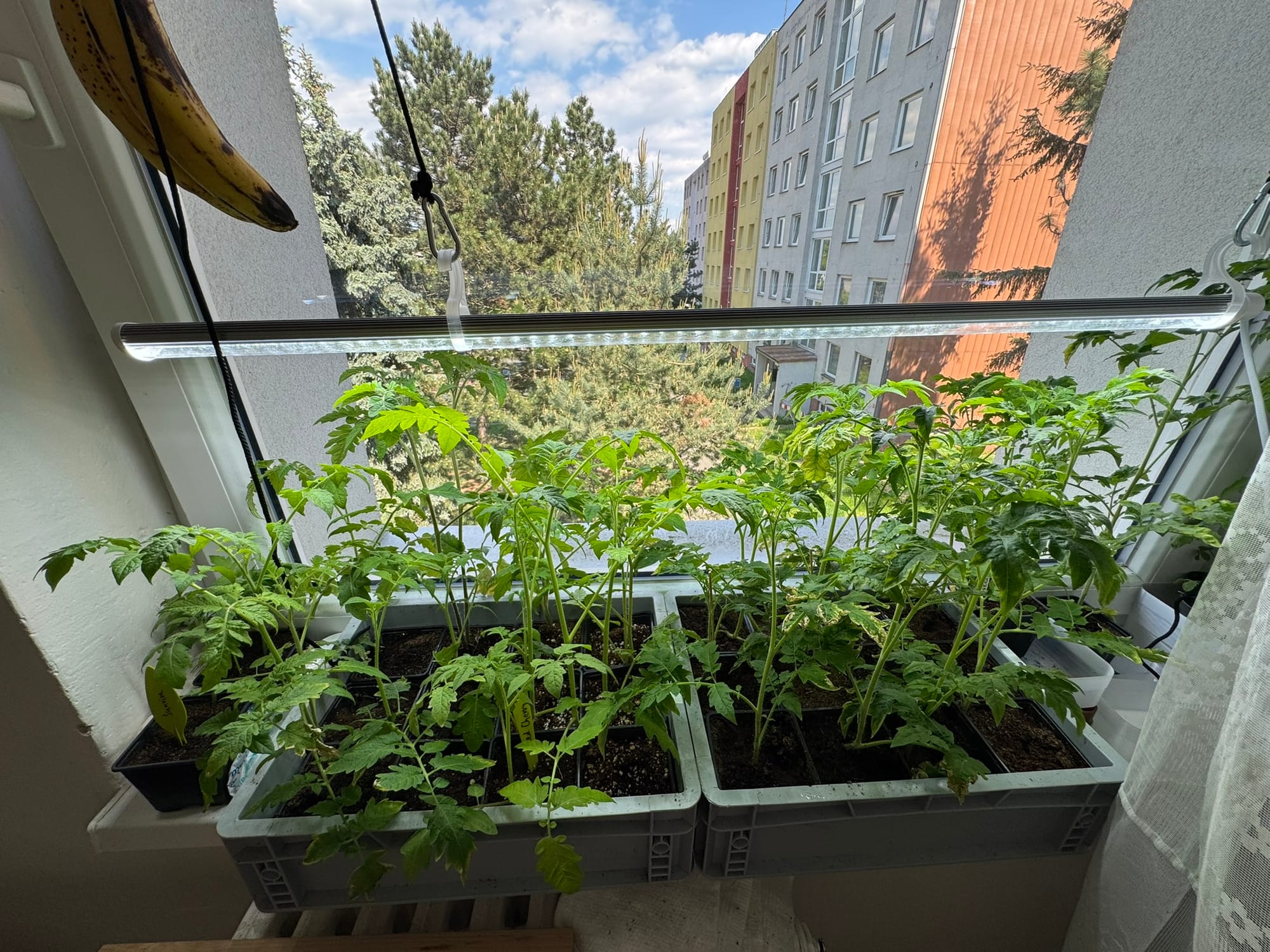
This year, I have my tomatoes split into two groups. Half of each variety grows in regular peat-based substrate, and the other half in coco coir. In comparison with last year, I managed the coco coir better, and the seedlings are strong and healthy. Still not as strong as those grown in store-bought peat-based substrate, but I am keeping the nutrient solution for the coco coir weaker than I usually would. I don’t want to kill them. The only exception is Resibella, which grows only in the peat-based substrate because I don’t plan to use it heavily in hydroponics.
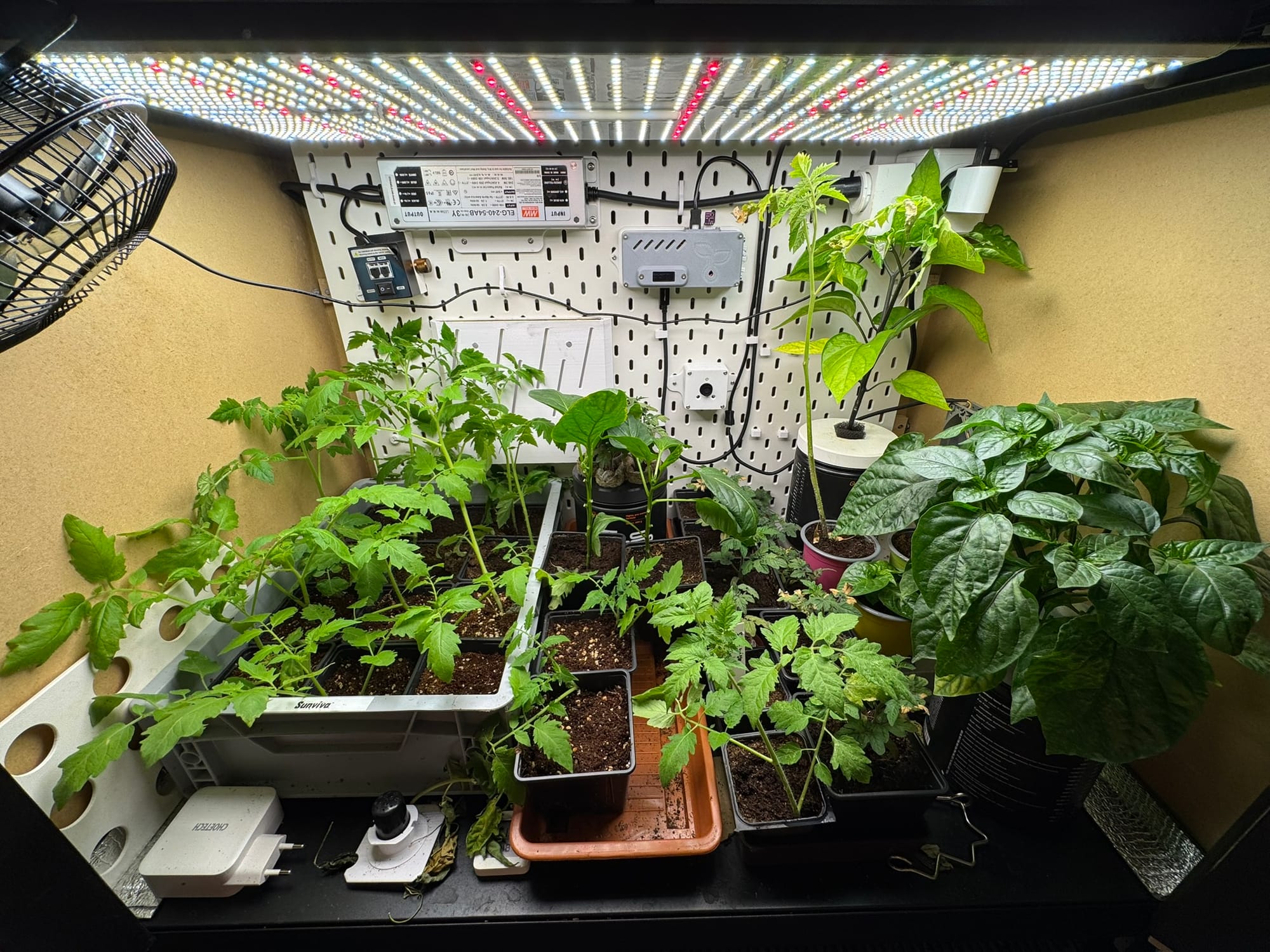
I have four indeterminate varieties of tomatoes this year, and I want to grow 20 of them in regular soil, watered with my water spike (more on that later), and another 20 of them in coco coir hydroponics. That comes to 40 plants, and let me tell you, I do not have space for 40 plants. But I have to find it somewhere. On the other hand, I doubt the weather will be as good as last year’s for tomatoes. I expect the yield to be affected by this.
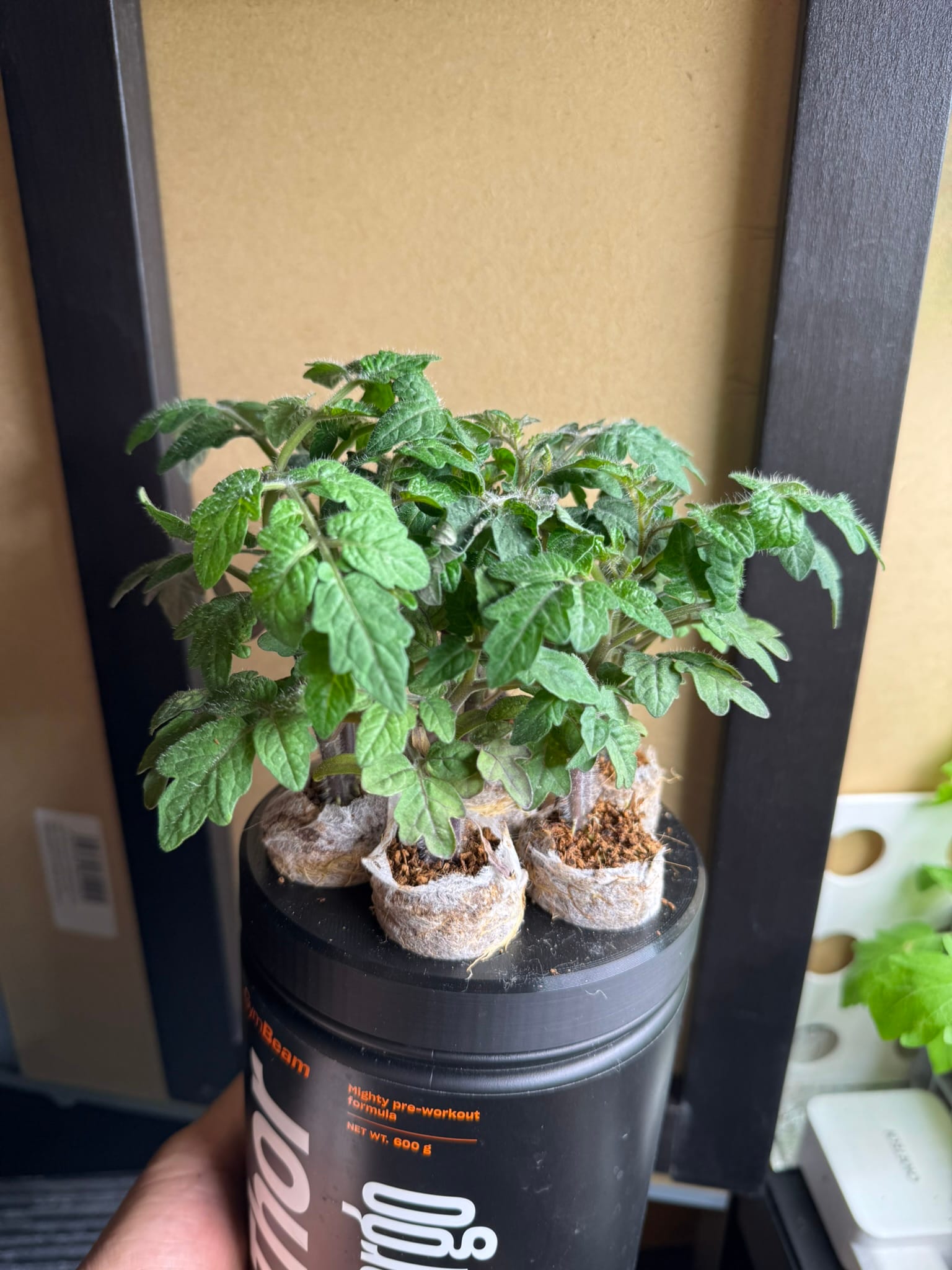
the cucurbit option
Remember how I grew Banana melons last year and yielded exactly one melon? It was a truly astonishing success. So this year, I am also expecting one Banana melon, but I am also expecting one baby watermelon. I got some seeds of Sugar Baby, a small and sweet red watermelon.

Did you know that watermelon is just a different kind of cucumber? That was a nice bridge to my cucumbers. I grow two salad varieties, and I want to try sowing them twice this year. So far, they are doing great. I had to prune some roots; they were lifting the seedling tray.
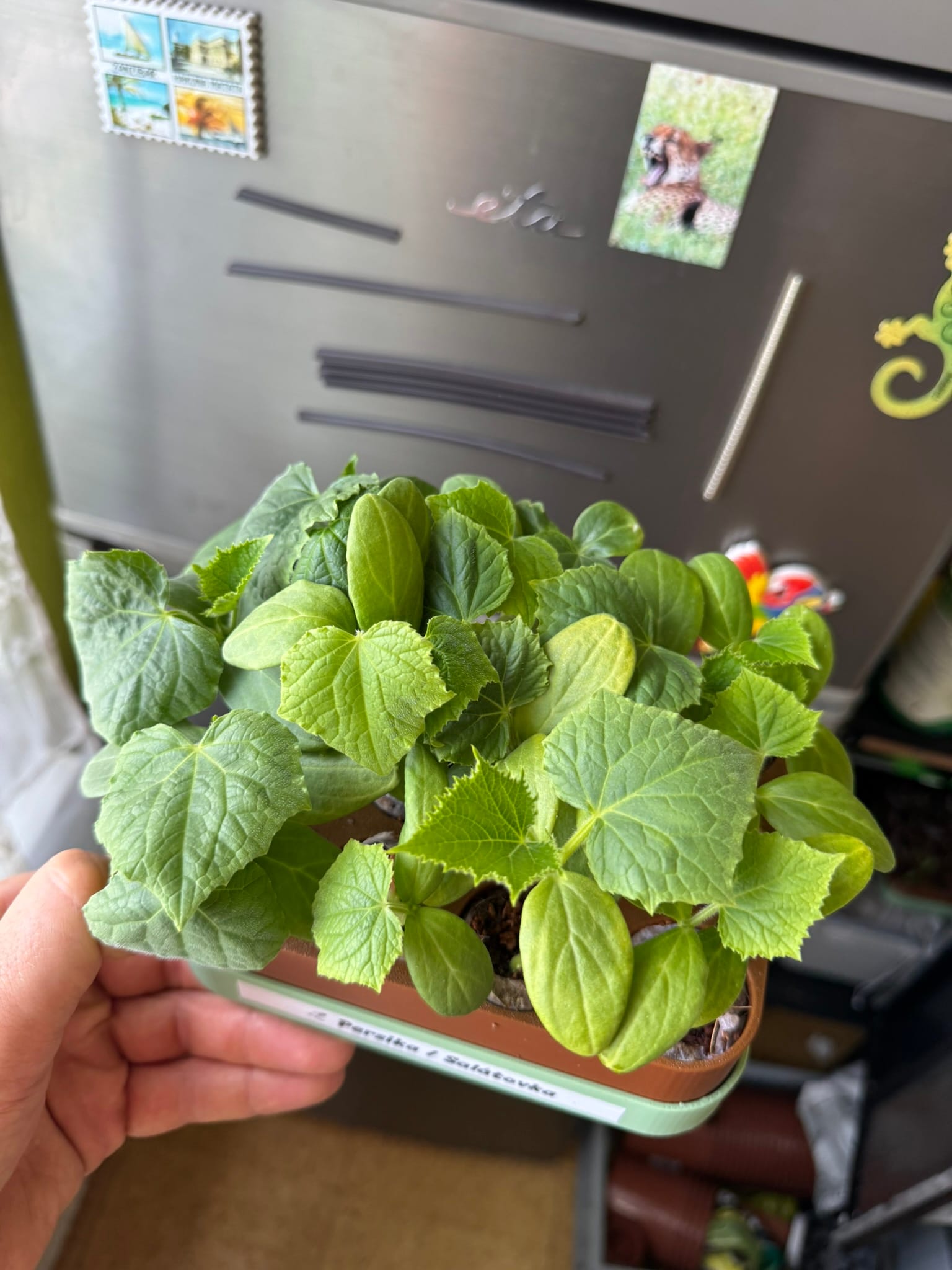
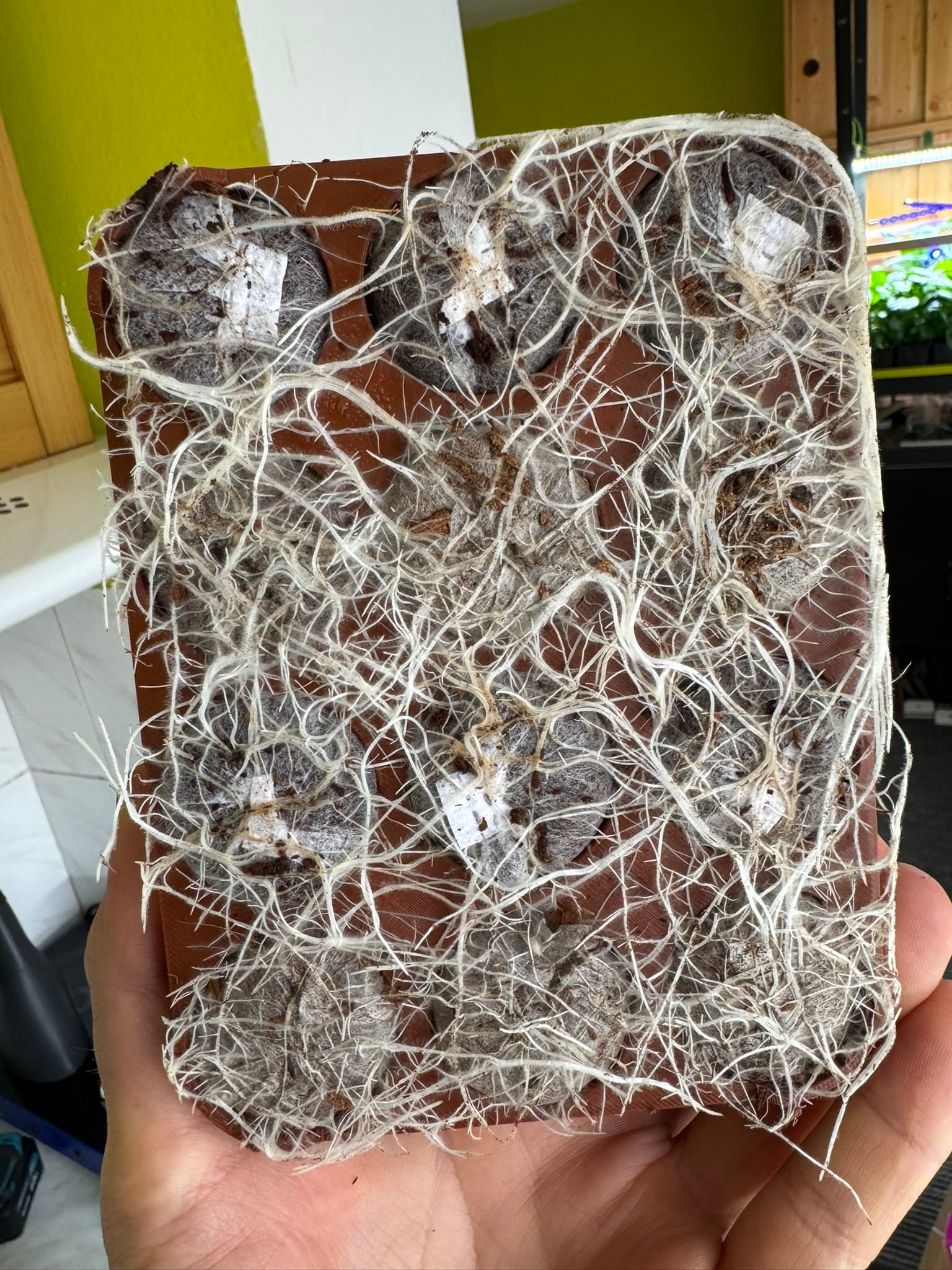
After last year’s success with pumpkins, I’ve decided to grow only winter squash this year. I like the taste more than the Sweet Meat Oregon Homestead, and they also produce more. There are still some of them left in my cellar.
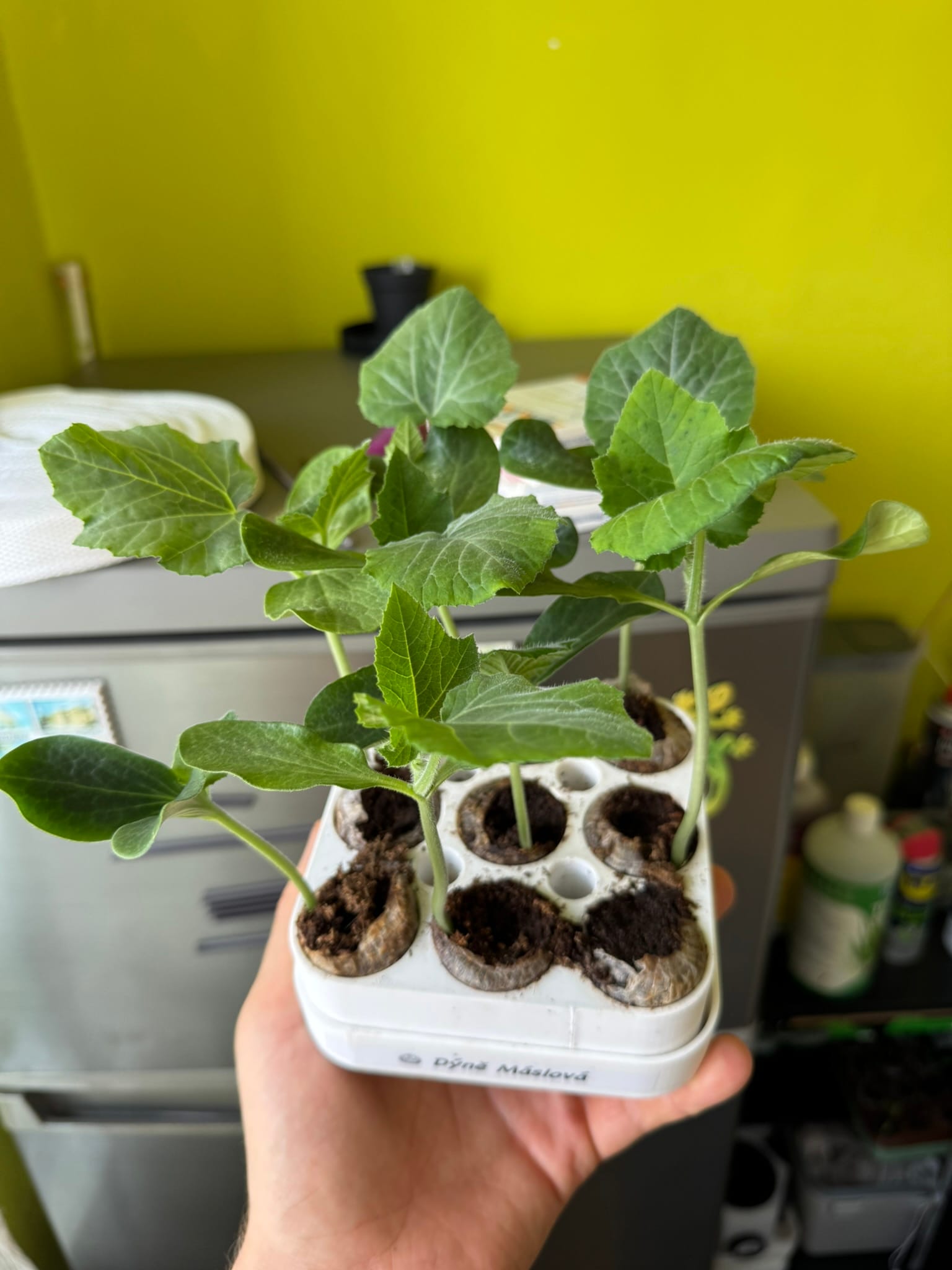
the MKULTRA
It's time to address some of the “more on that later” notes. Last year, I used a terracotta spike fitted with a 1/2” adapter to irrigate my tomatoes. It worked nicely, but the mechanical design wasn’t strong enough and failed. I modified the original design, making it more sturdy and changing the dimensions to fit a more widely available product. These will irrigate not only tomatoes this year but also my greenhouse.
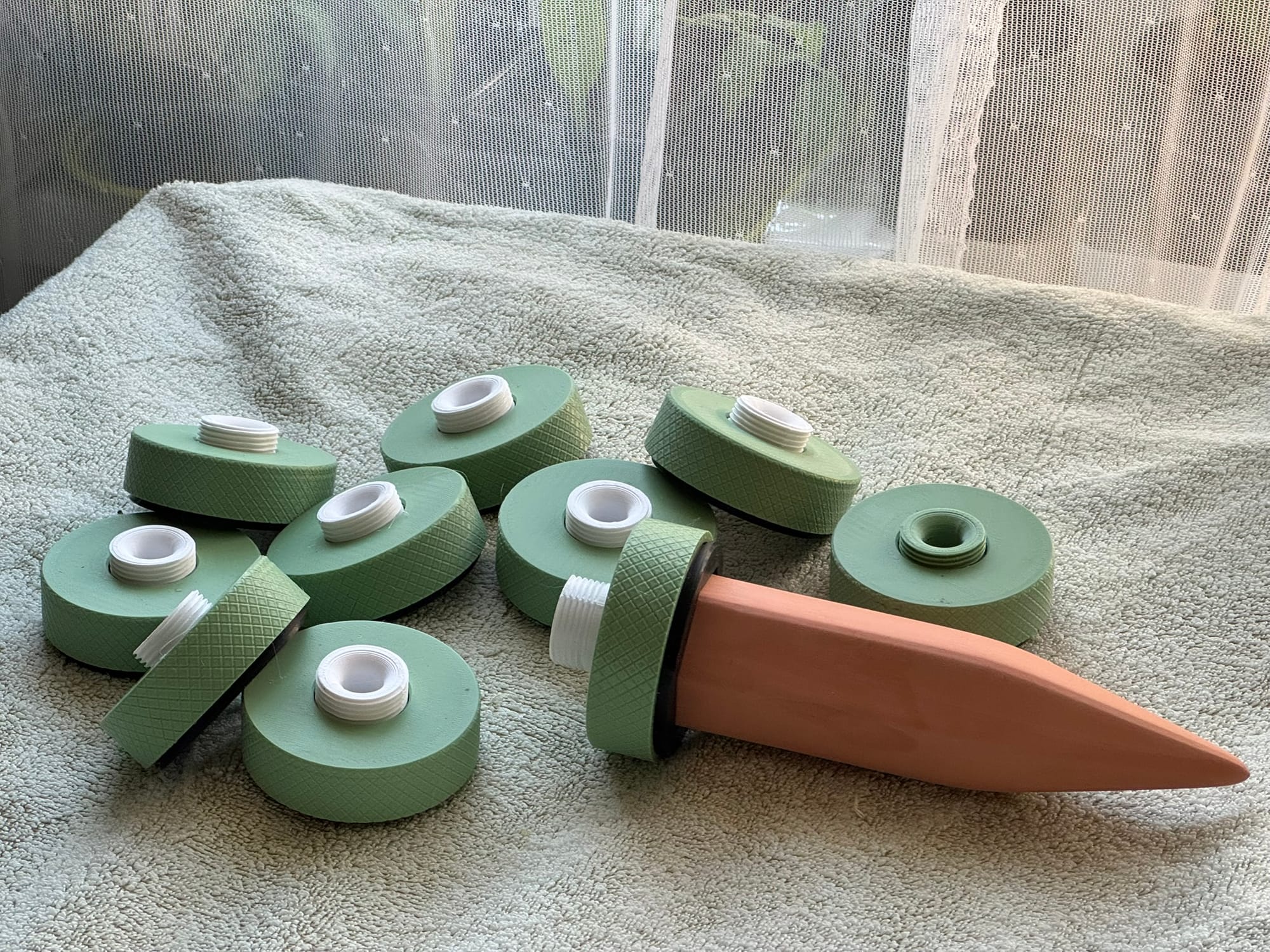
The other thing I want to hint at today is the hydroponic experiment I plan to run this year. I have some experience building and maintaining hydroponic systems, but the only one I run on a larger scale is the wicking system with coco coir. I will also use it this year because it’s too easy to set up and maintain. There is zero reason not to. But I want to expand my experience by trying out one of the most popular hydroponic methods, the Kratky method.
The Kratky method is a passive and media-less hydroponic system that you can run basically anywhere. The build is stupid easy, and you only need a container and a nutrient solution. The plant is placed just shy of the surface in the water, and as it grows and consumes water, the water level drops, leaving older roots exposed to the air. This triggers a natural response in the plant, and it starts growing a special kind of roots, the air roots, to provide oxygen. Otherwise, the plant would drown.
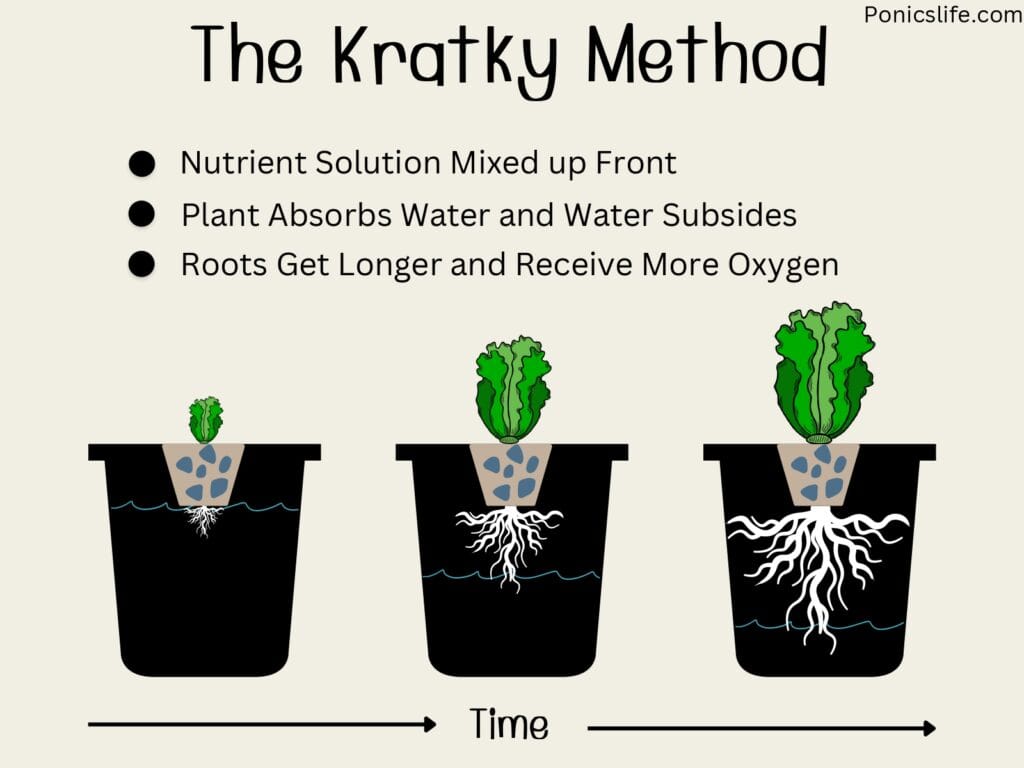
The beauty of this system is that, when managed and designed properly, it’s a set-and-forget system. If you choose a reservoir that provides the plant with nutrients and water through its entire life, you don’t need to top it off. Ever.
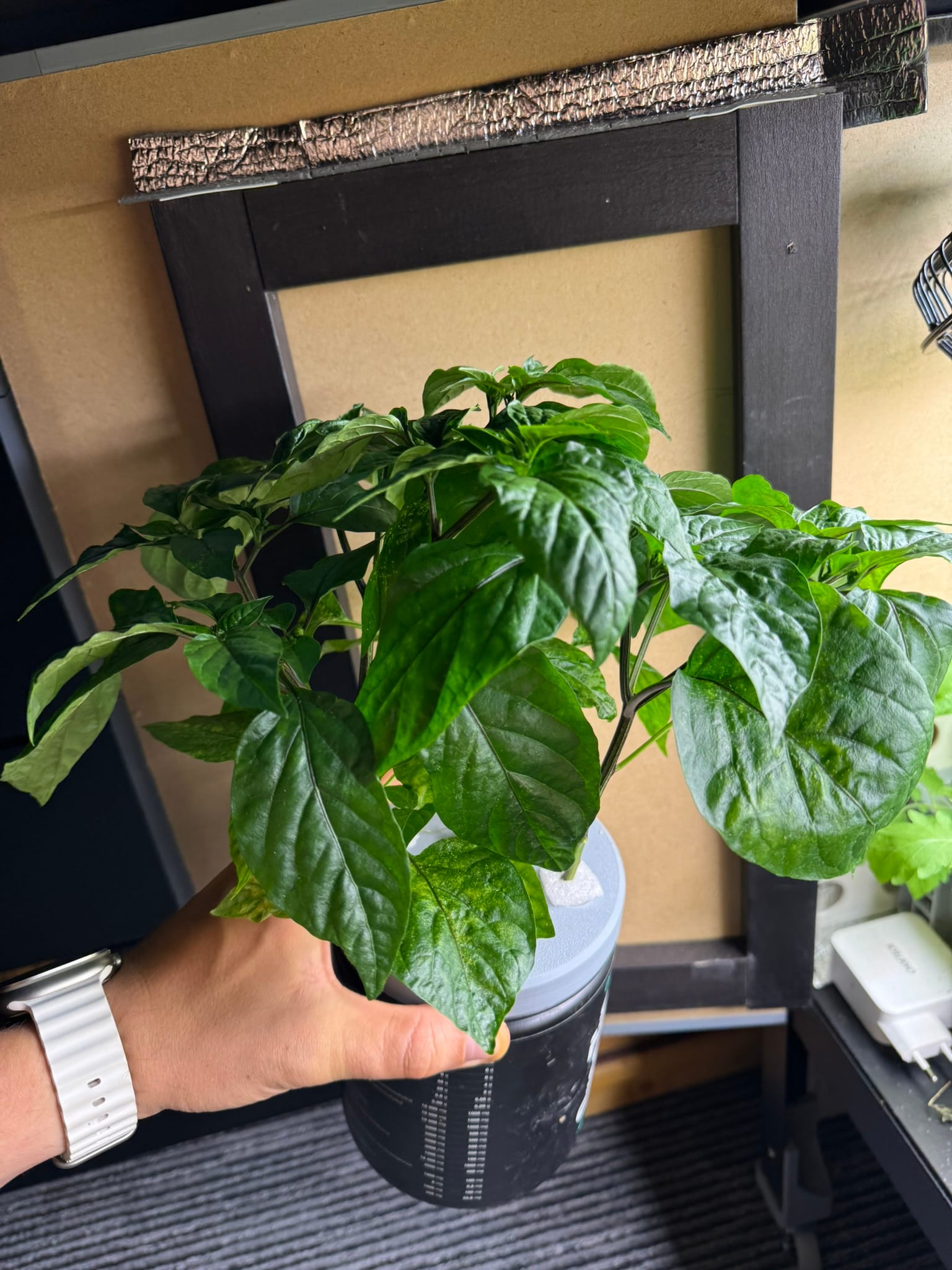
It just so happens that I have a bunch of black and empty containers lying around. The same kind I used for propagation in my Shorts #1: The Basil. I even tested this with one jalapeño pepper plant and what do you know, it is flowering already.
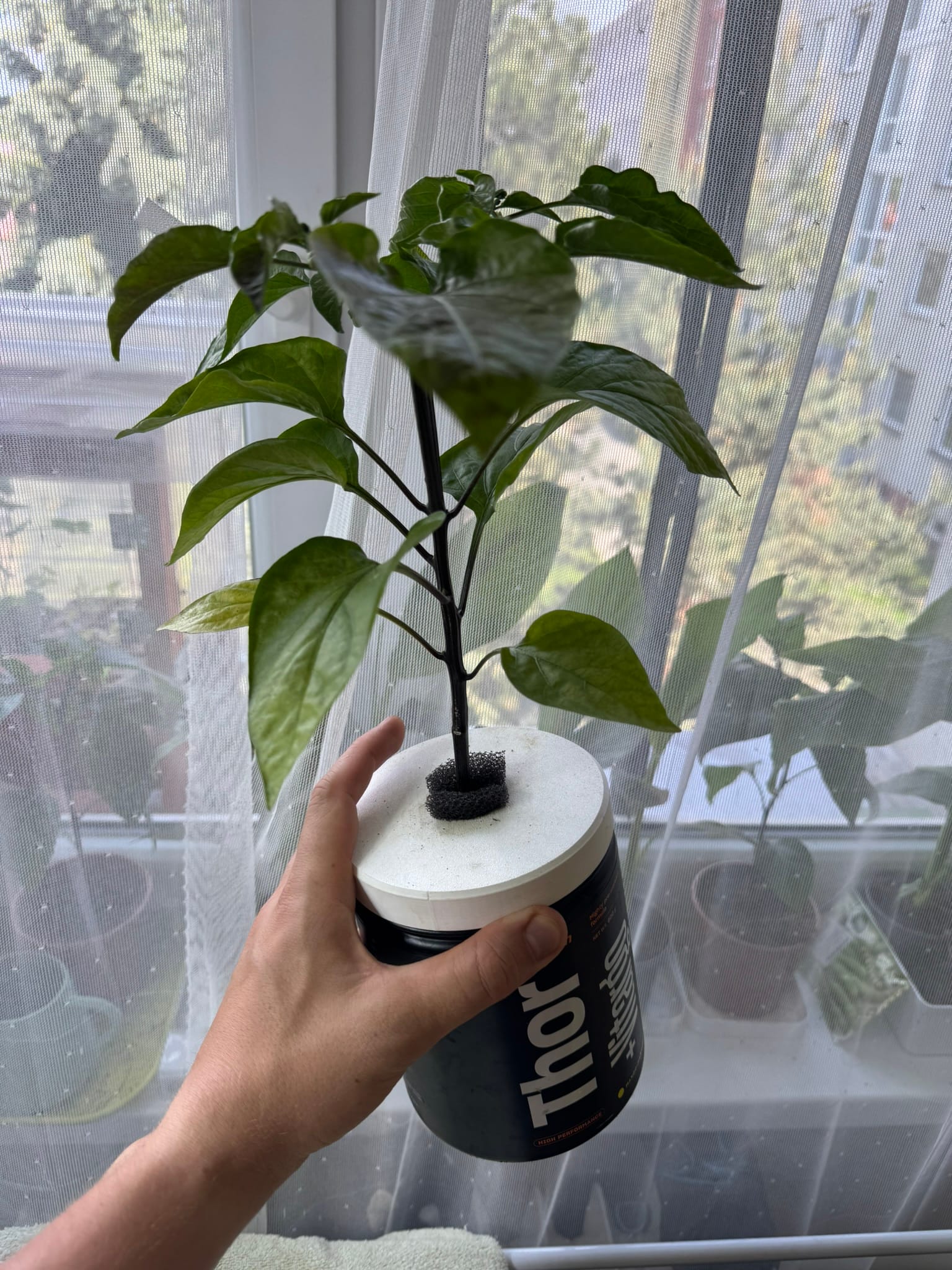

There is actually one more experiment, but I want to keep that as a surprise because I am not sure it will work as I imagine.
I hope this update won’t bore you to death. I tried to finish the post sooner, but some unfortunate events pushed the publish date way into May. I will try to address this in the next post by preparing parts throughout the month rather than collecting my notes at the end.





Member discussion